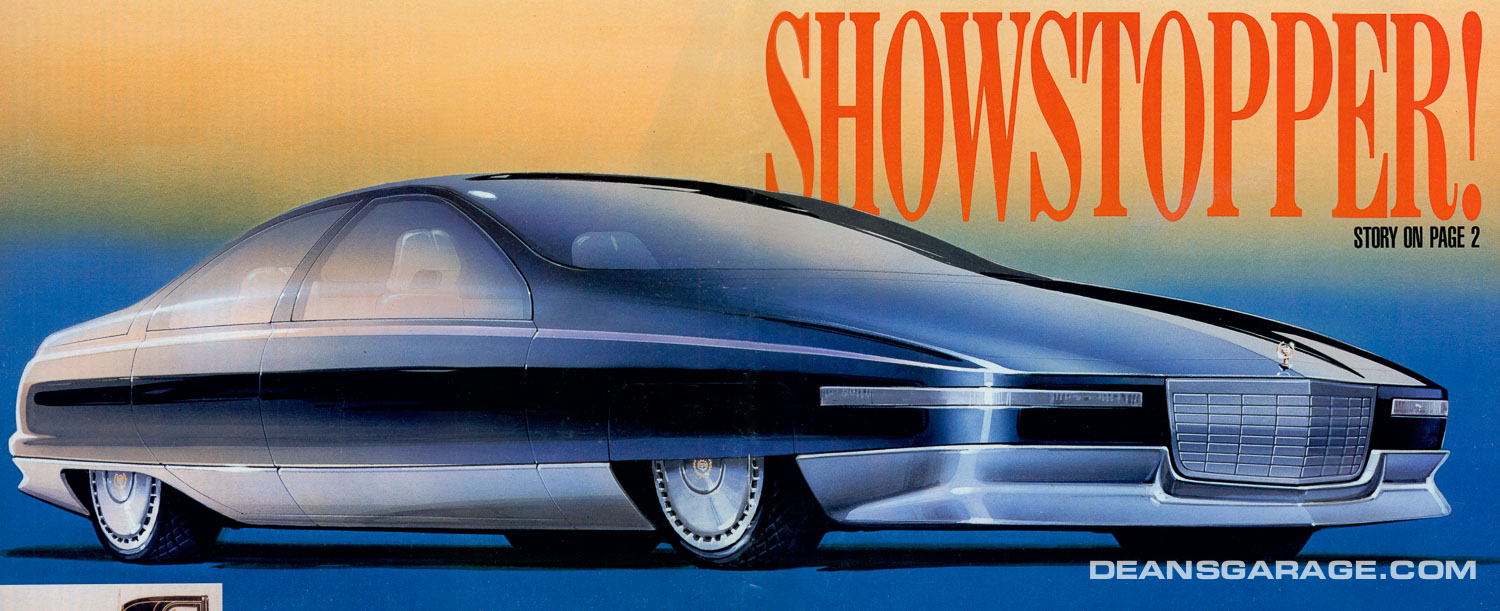
How the Cadillac 1988 Voyage Concept Show Car evolved
by Bruce Brooks
By late 1984 I had transferred from Buick Exterior Design Studio No.1 to Advanced Exterior Design Studio No.4 to replace John O’Brien who had retired. John was the assistant to Al Harbour who was the chief clay modeler in that studio. Al had then retired in late 1985. Don Brougham transferred from Chevrolet Exterior Design Studio No.3 and was promoted to replace Al.
In mid-1986, prior to Irv Rybicki’s retirement in October as Vice President of GM Design, the Advanced Design Studios had a combined showing of 3/8 scale models for him. George Moon was the director of the Advanced Exterior Design Studios and Bernie Smith was his assistant. Our Adv. Ext. Design Studio No. 4 had contributed a scale model designed by Jerry Brochstein for that show. Chuck Jordan was GM Design Director at that time and had viewed all of those models shown. After Chuck had taken over from Irv Rybicki to become Vice President of GM Design, he started to pursue the possibilities of the further development of the model design that he had seen.
Chuck had then asked Cadillac General Manager, John Grettenberger to view the models. John asked Dick Ruzzin, who was the Chief Designer of Cadillac Exterior Design Studio, to view the models with him to get Dick’s opinion. John and Dick both agreed on one model design they liked best. It was also the design Chuck Jordan had preferred, so with that he and John Grettenberger had some discussion to possibly use that design in a future Cadillac concept show car.
To exercise his design decision options, in early January of 1987 Chuck went out to the GM Advanced Concepts Center in Newbury Park, California to start a project for their studio to design a luxury car that they thought would meet the requirements for the California market. After a month he went back to see the results. Chuck had then mentioned their exterior design was good, but not as good as the one designed at the Warren, Michigan studio. He however said their interior design was a knockout. In a conversation I had with John Shettler he mentioned that Robert McCann had designed the interior at ACC. Their exterior model was designed by Jim Bieck.
Prior to this, in the mid to late 1980s, GM was under a lot of press and media criticism for producing too many look-alike cars. In particular there was an article in the August 22, 1983 issue of Fortune magazine that made that very apparent.
In early February of 1987 Chuck Jordan came to Adv. Ext. Design Studio No.4 and asked our chief designer Allen Young for a photo of the scale model we had done back in mid-1986. That photo was of the scale model Jerry Brochstein had designed. Chuck had made the same request for photos from the other Adv. Ext. Design Studios of their scale models. George Moon had retired and Jerry Palmer was promoted by Chuck to be the director of all of the Adv. Ext. Design Studios with Bernie Smith as Jerry’s assistant. Chuck wanted to use the photos for a presentation GM CEO Roger Smith was going to give to press and media people. Roger Smith wanted to show that GM design studios were designing distinctively different car models for possible future production. Apparently at an earlier rehearsal for this presentation, Roger Smith had conferred with John Grettenberger and Chuck Jordan that they were in agreement for Roger to make an announcement that a particular model being viewed would become the next Cadillac concept show car. I’m just not sure who or when this project was given the name Voyage. It was probably made by someone at Cadillac Division at a later date.
As it turned out, that car being viewed was the one Jerry Brochstein had designed. So as soon as Chuck got back to work he walked into our Adv. Ext. Design Studio No.4 and announced “Brochstein, where is that scale model you designed? That’s your studio’s new full size Cadillac show car project.” That became the Cadillac Voyage concept show car. The original intention was to have a V12 engine but it was determined there was not enough development time to have one completed in time to use so a V8 was to be installed instead.
We started in early February of 1987 with a full size clay model we were working on at that time that had to have a wheel base dimension change and an overall length increase to the armature before we could proceed with the clay surface design changes. Don Brougham was the chief clay modeler and I was his assistant. Ivan Koop, Bob Greening and Frank De Dona were the other clay modelers assigned to the studio. There were a number of occasions when we needed modeling help during straight time and overtime when we were able to have Advanced Design Studio No.3 loan Bill Dineen to our studio to help out.
By the end of February we had gone through a number of design changes with Di-Noc reviews and photos taken outdoors in the patio. We had a time frame to do the approved released clay surfaces by June. We had to move the clay model out of the studio and ship it to Triad fabrication in Troy, MI. The model was set up there where we completed our final surface clay highlighting work.
Triad was contracted by Cadillac to produce the show car with design direction by GM Design Staff and the component systems directed by Cadillac. Sheri Perelli was Cadillac’s marketing manager and Dick Fancy was the Design Staff project manager. Bill Rohlfing was a Triad employee, contracted by Cadillac, to be the project manager.
Triad had a deadline to have the car completed by the first car show at the GM “Teamwork and Technology—For Today and Tomorrow” showing at New York’s Waldorf-Astoria hotel which was the sight of the first GM Motorama exhibition in 1949. Triad shipped the car before Christmas of 1987 and the show opened on January 5, 1988. A late design change was made for a different grill pattern but the new one was not completed in time to be install before the car shipped. To make sure the new one could be installed at the show, plans were made for Jerry Brochstein to hand carry the grill, wrapped in brown paper, with him to board his flight to New York. The grill was placed in an extra seat purchased next to him. This was to insure that there would no possibility of damage possible had the grille been checked through luggage. Jerry also hand carried the grill to the Waldorf-Astoria Hotel, and delivered it to Bill Rohlfing who made arrangements to have it installed at the show just before it opened. Other show models displayed for the first time were the Chevrolet Venture, Pontiac Banshee, Buick Lucerne and GMC Centaur Truck.
The Voyage interior clay modeling was done at Triad with the interior design information sent from ACC in California. John Shettler was the director of the Advanced Interior Design Studios and had a major influence on the interior design process. Cathy Wagner was the lead GM Design Staff interior designer for the project at Triad with Rohan Saparamadu making some design contributions with the adaptation of the ACC interior design of Robert McCann’s. Our studio Chief Engineer was Tom Lauer and the Technical Stylist was Patrica Mastroianni (AKA, Tish Mastro).
In 1989 a very nice small scale model of the Voyage was made in the Design Staff UAW shops that demonstrates the craftsmanship and talent of the people that worked there. The original clay scale model was done by Charlie Nittis who was a very talented clay modeler that worked in Advanced Vehicle Concepts Studio. From that model the shops were able to make casts and then fabricate all of the small parts to assemble a complete an exact replica of the full size show model. It was complete with a see through upper and interior. Robert Badger in the metal shop supervised the build of the model.
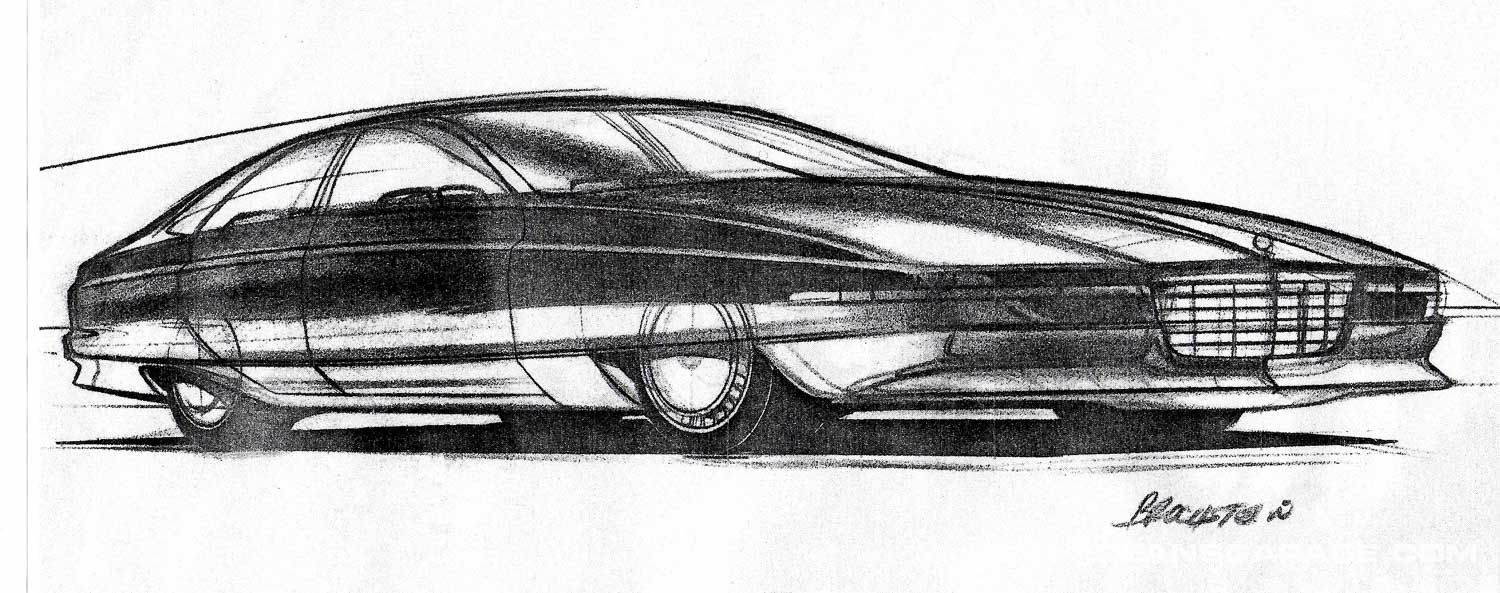
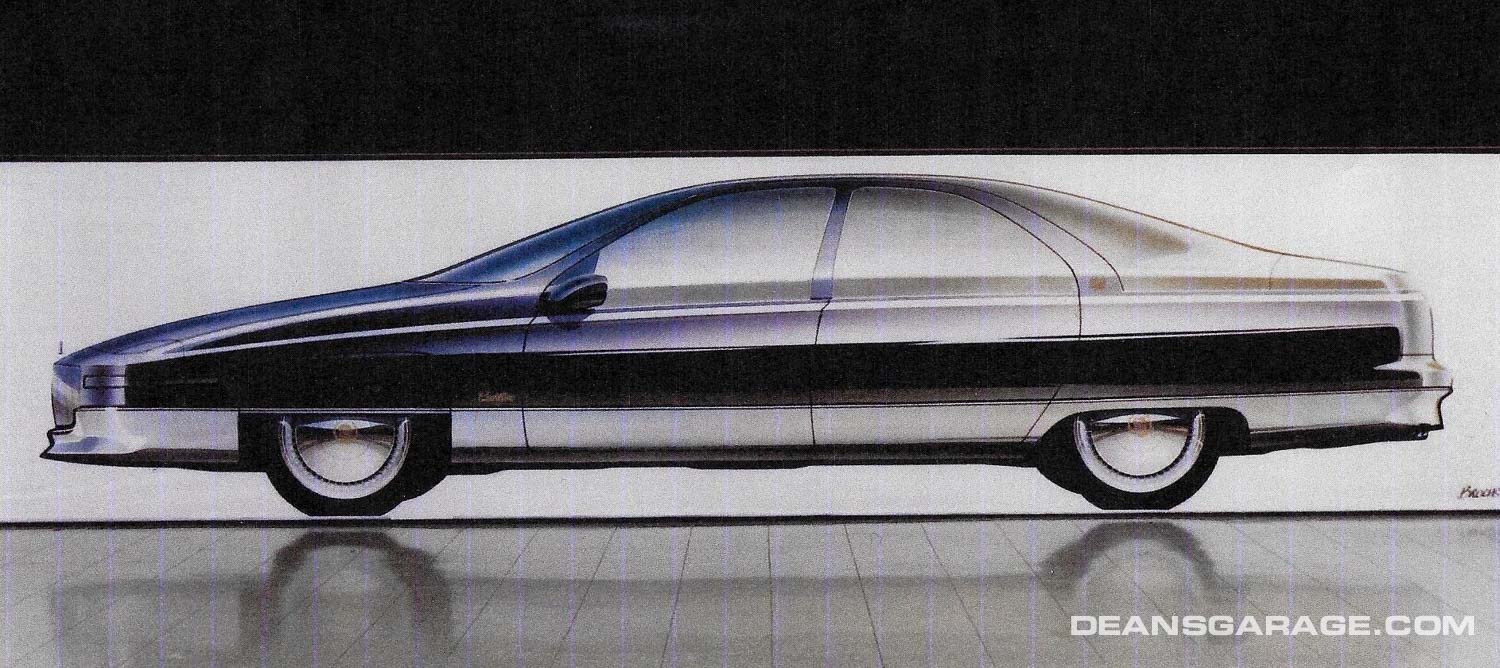
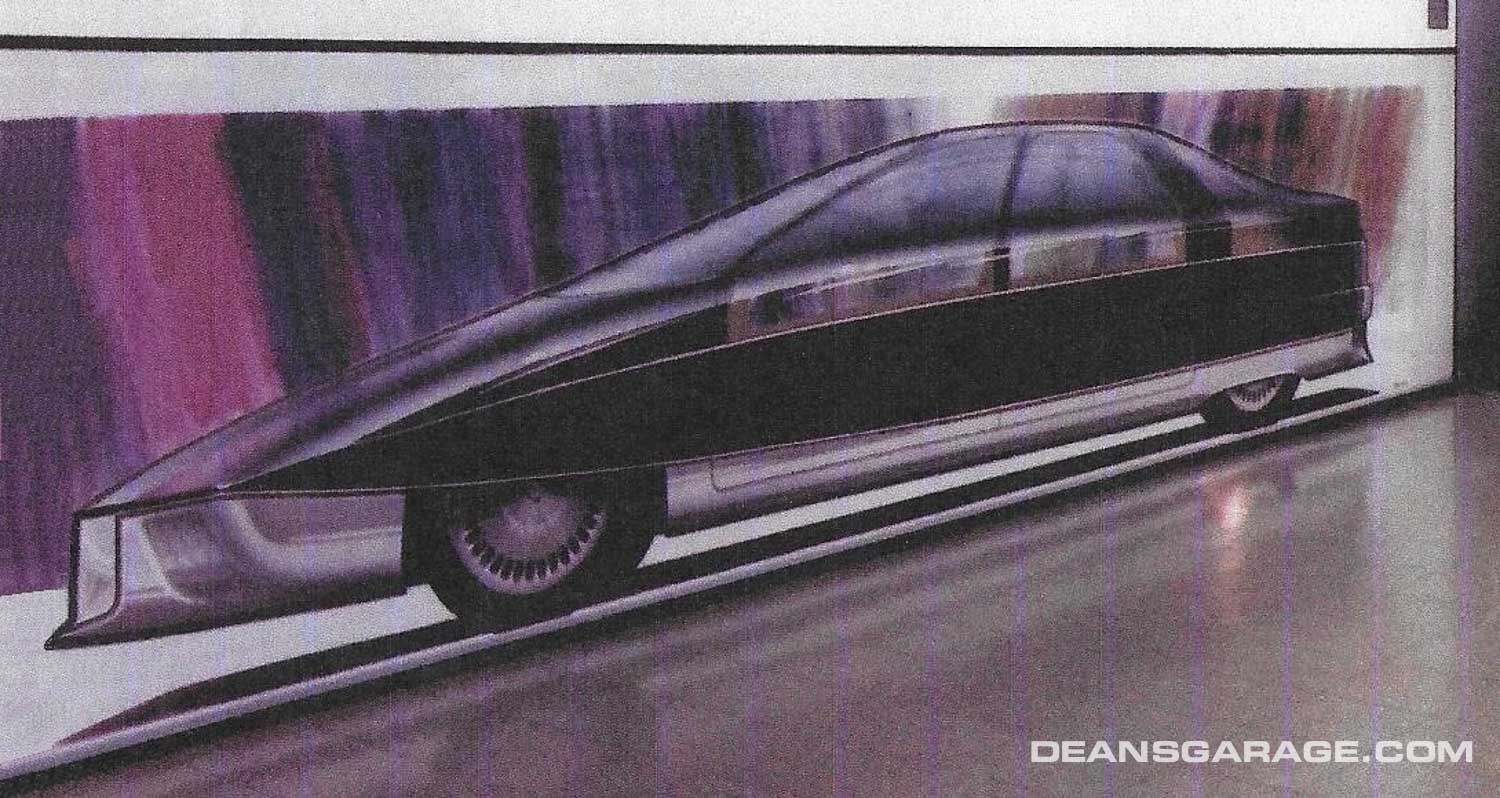

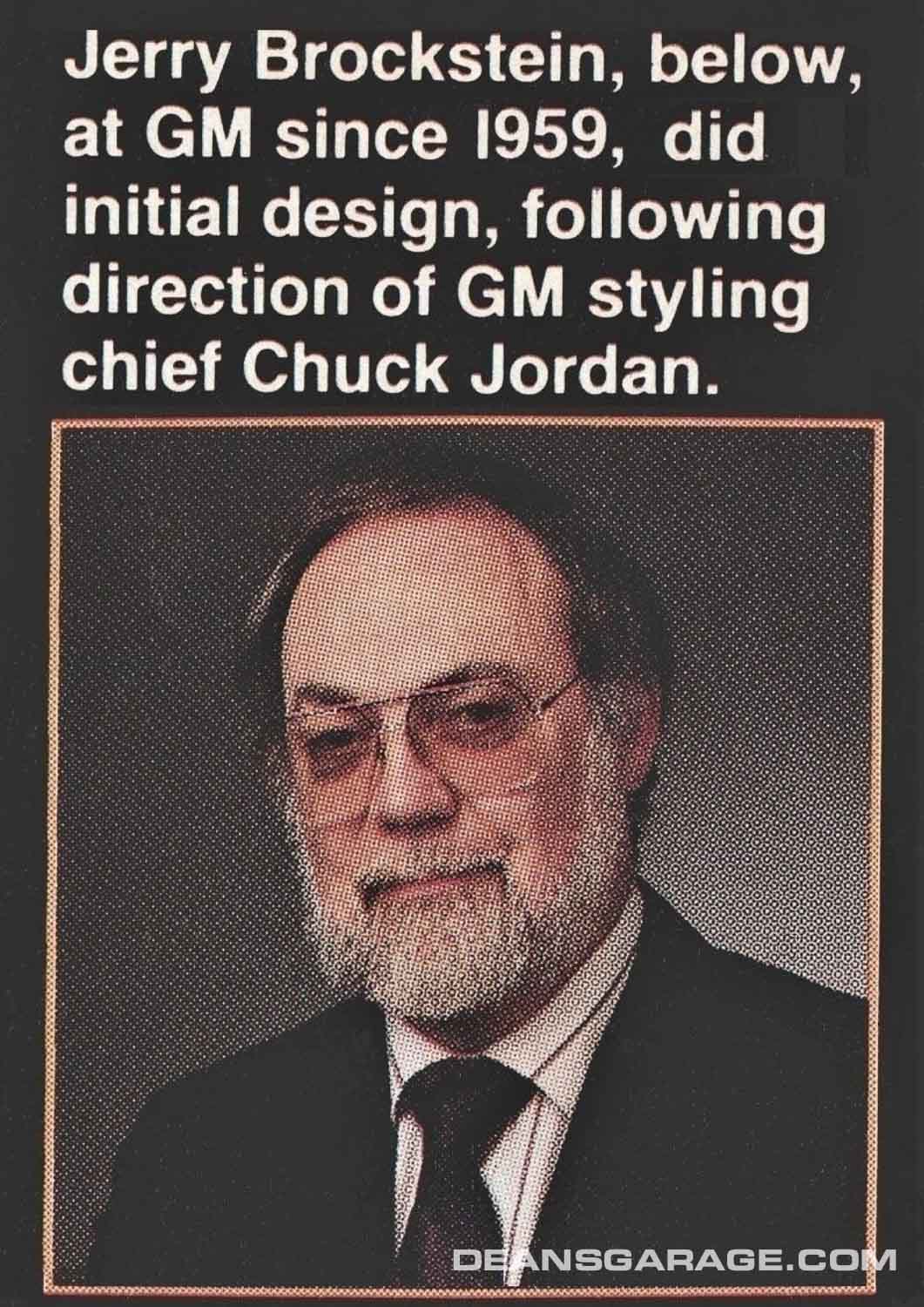
Sketch and full-size renderings by Jerry Brockstein.
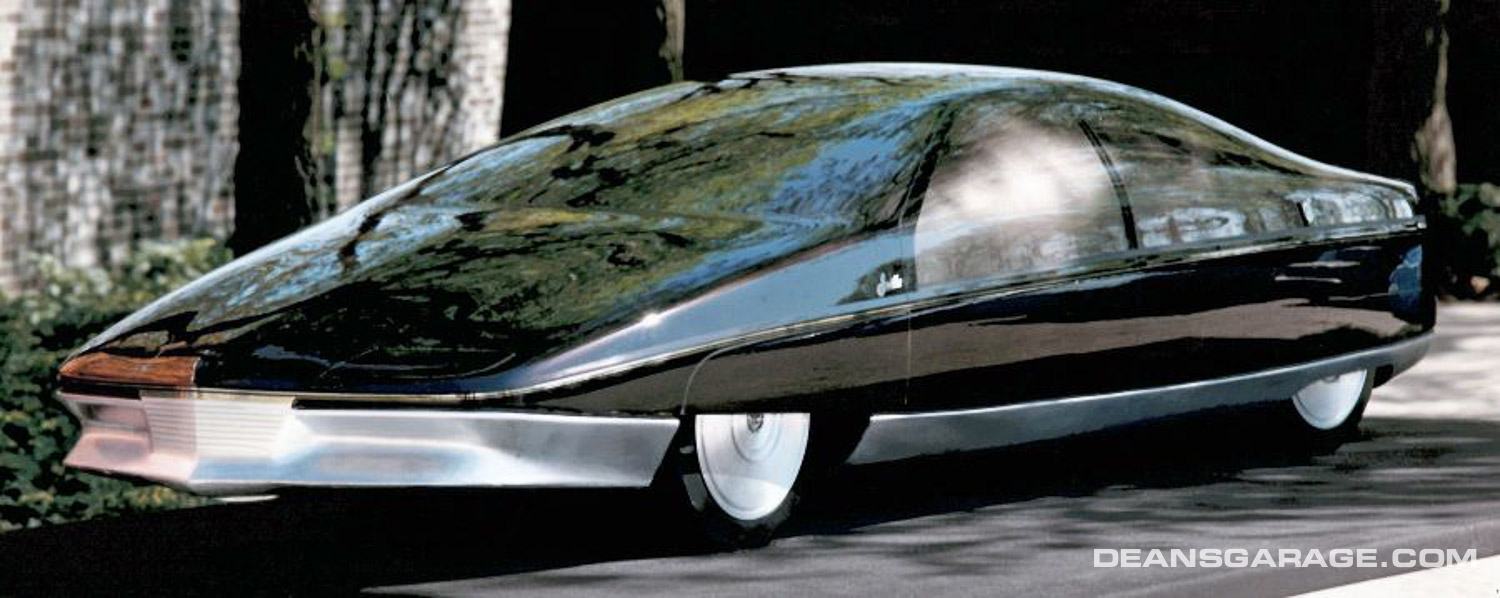

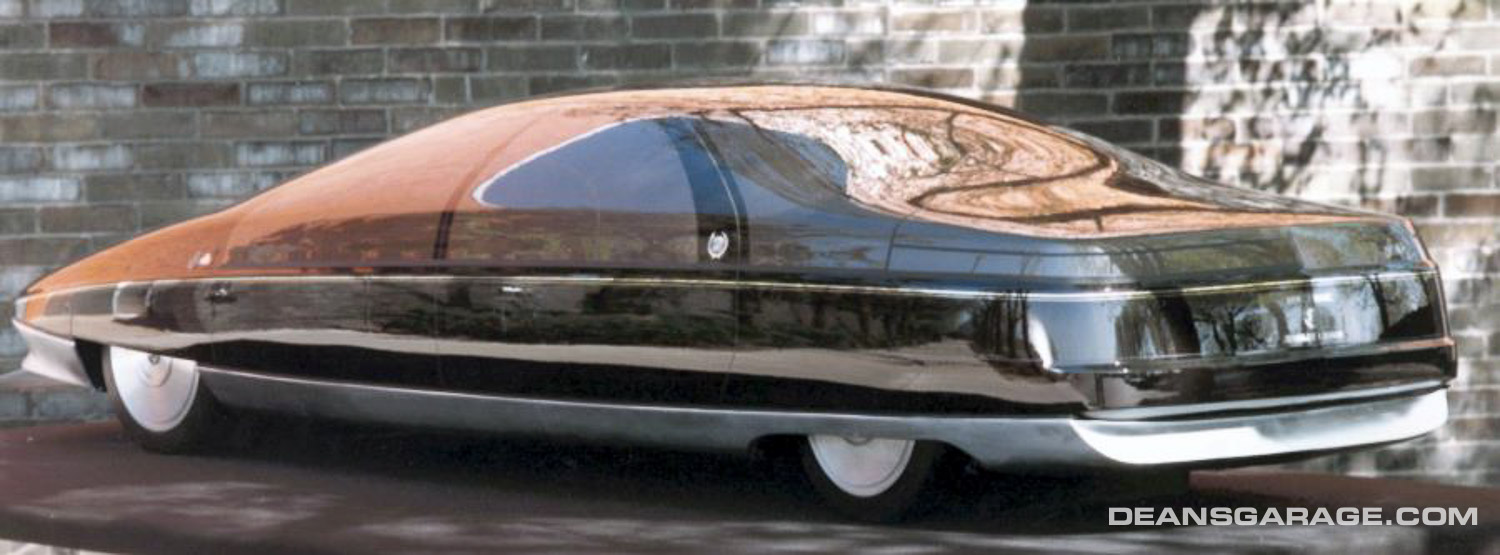
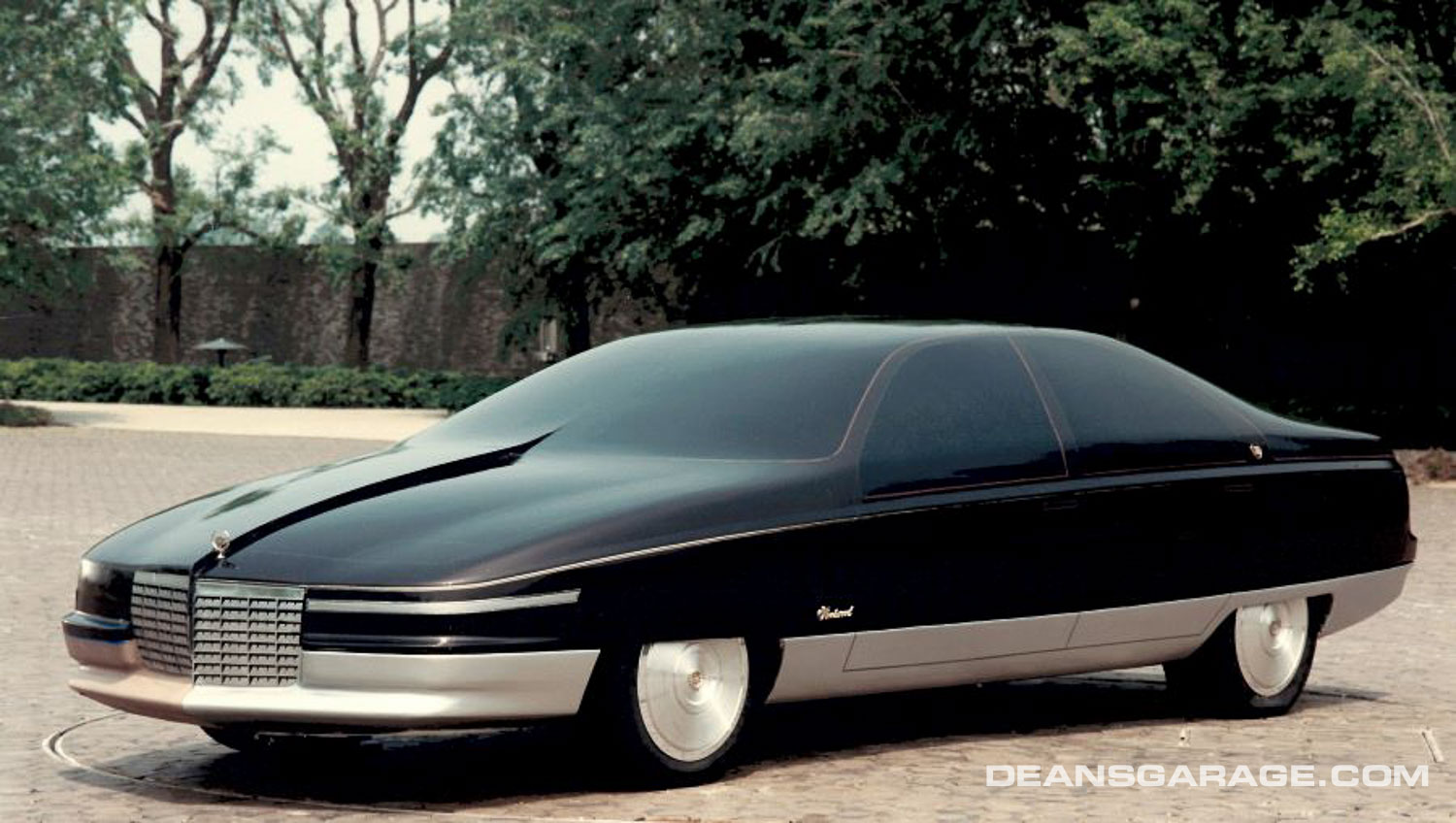
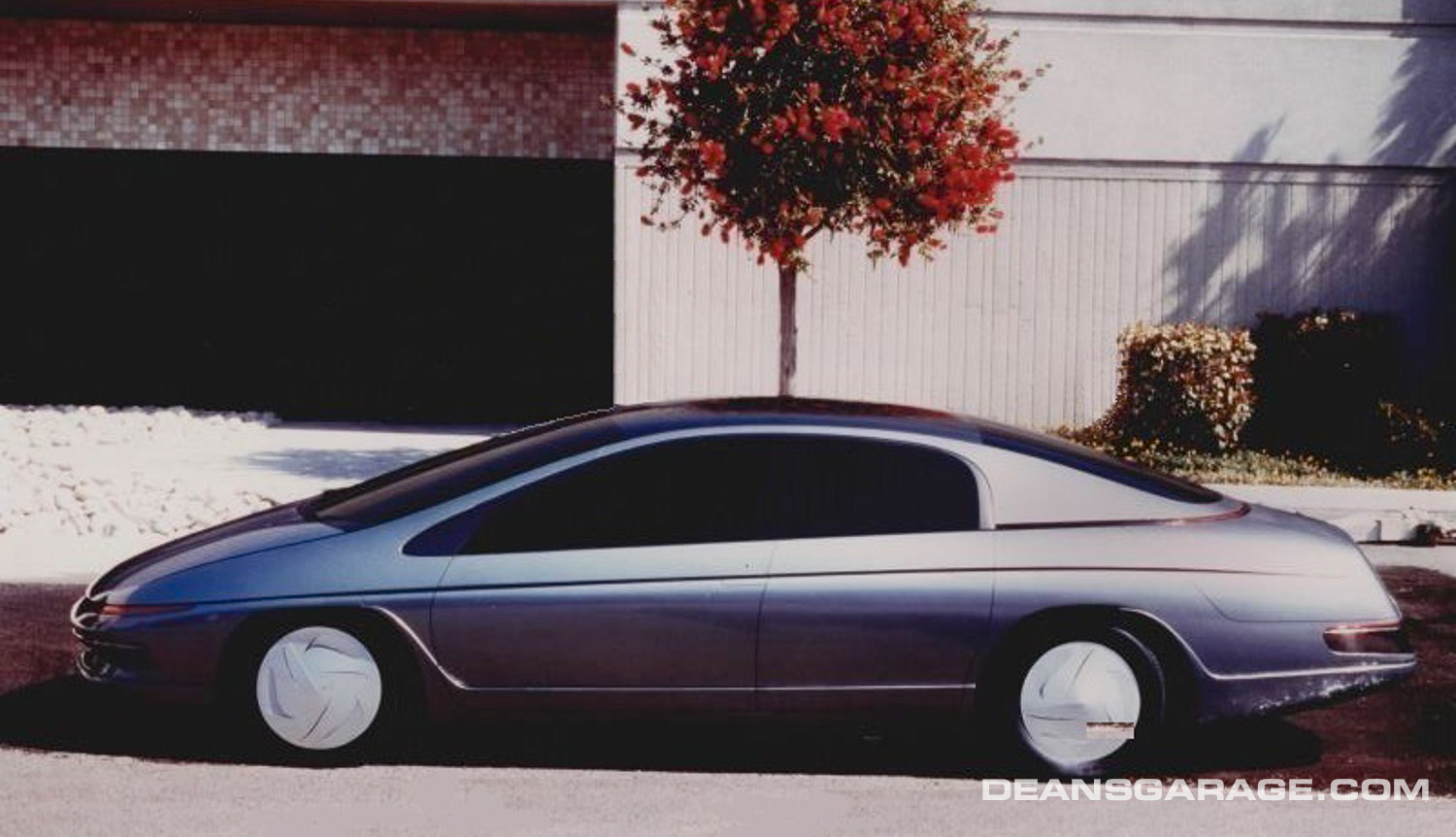
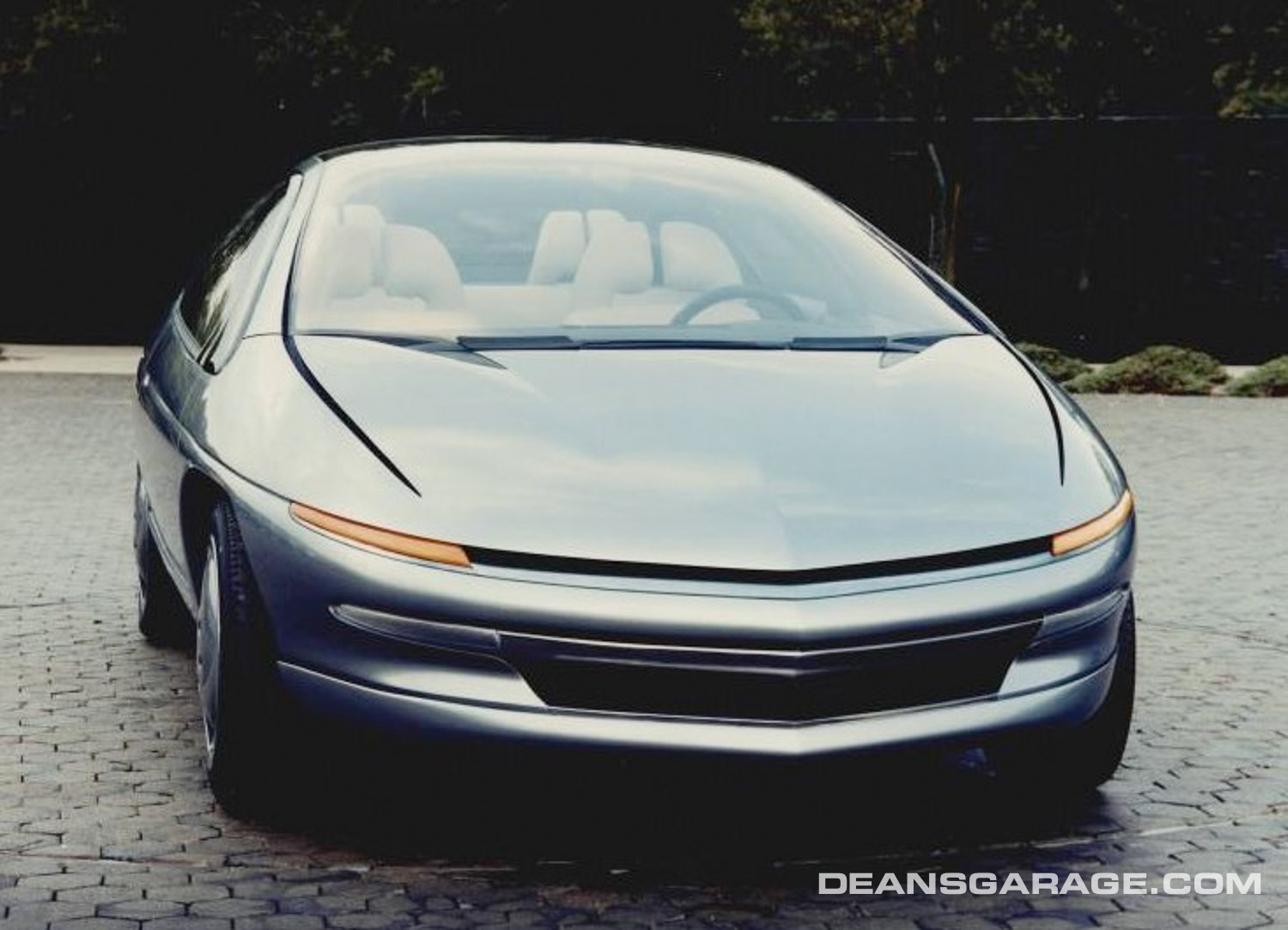
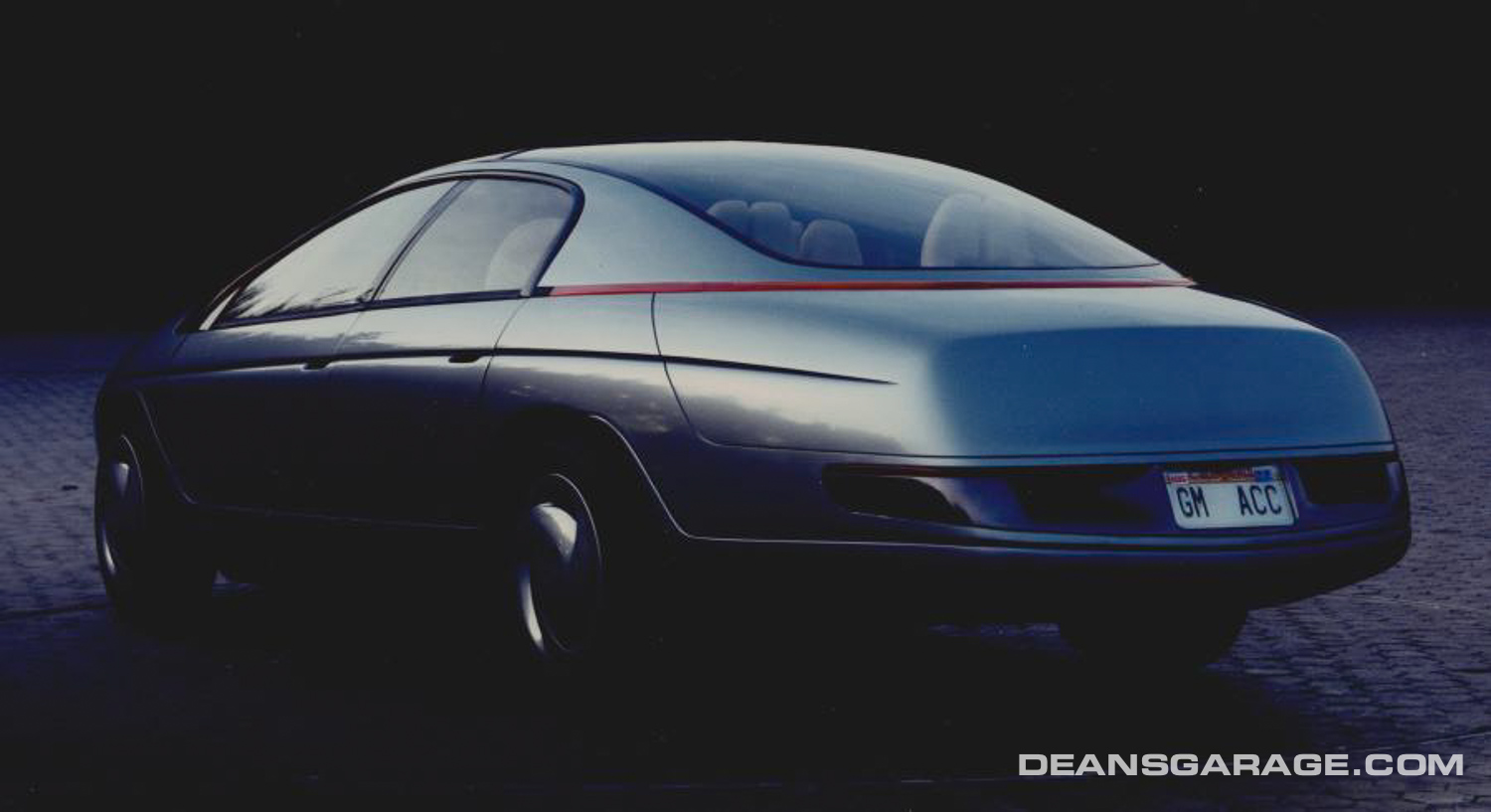
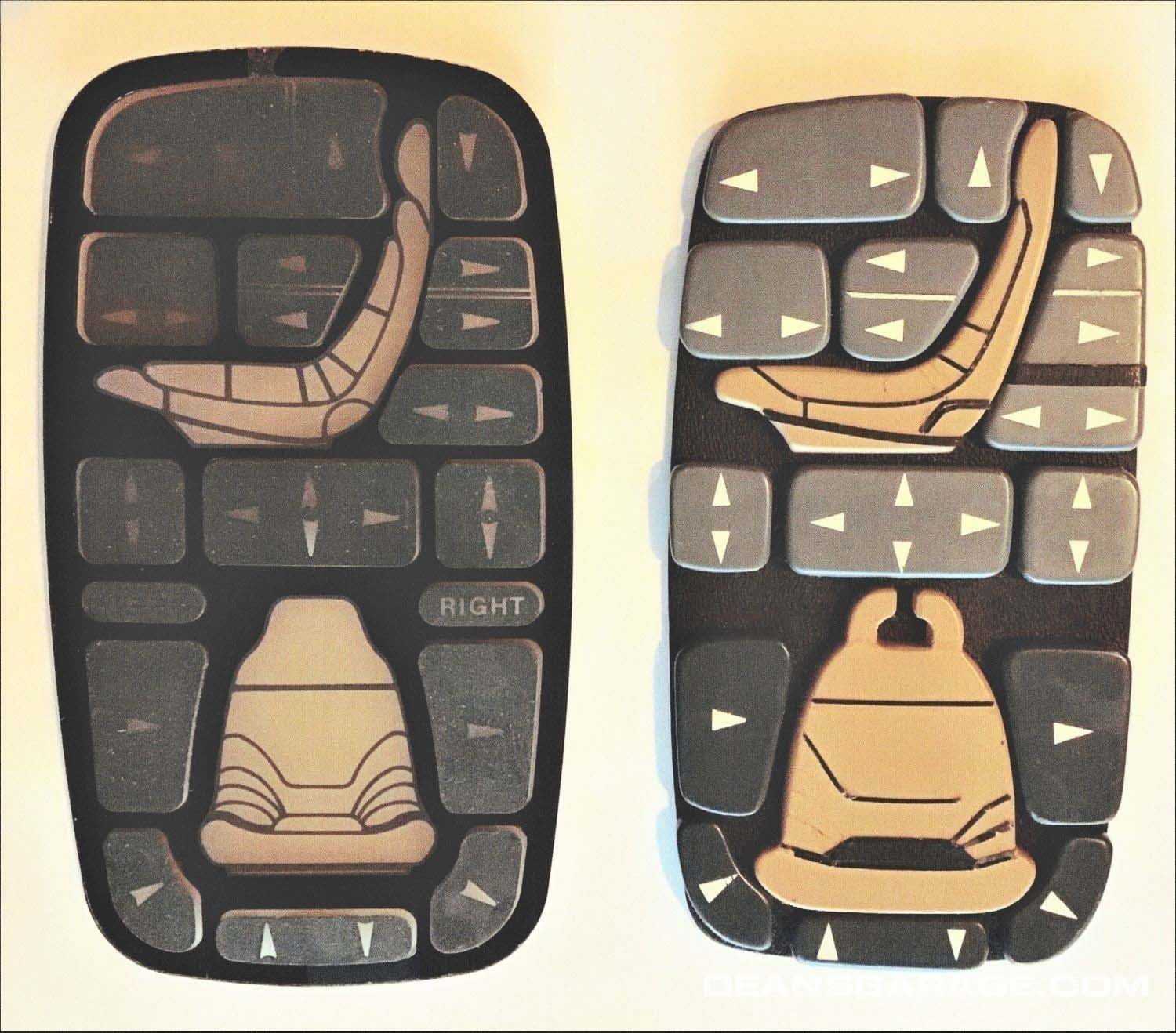
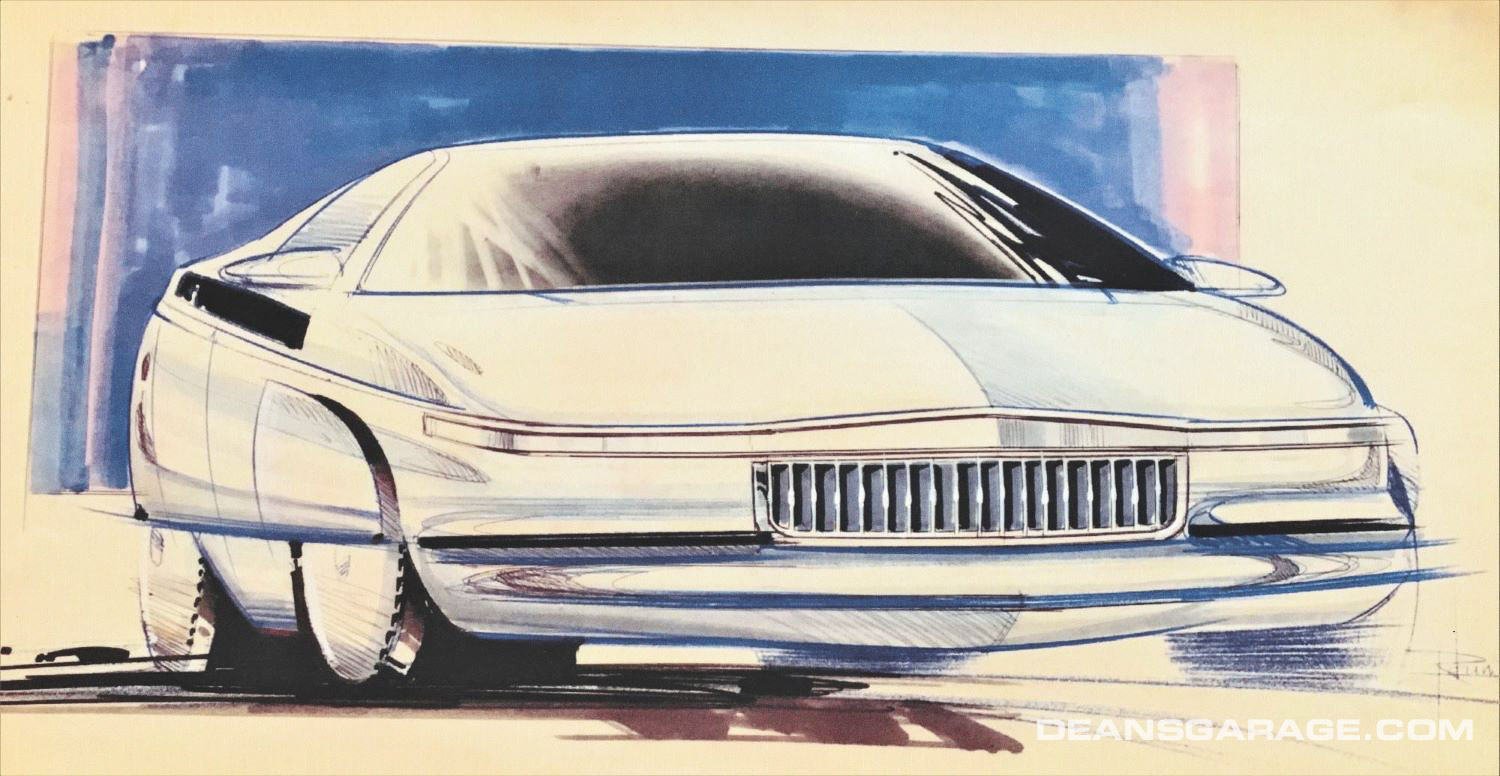
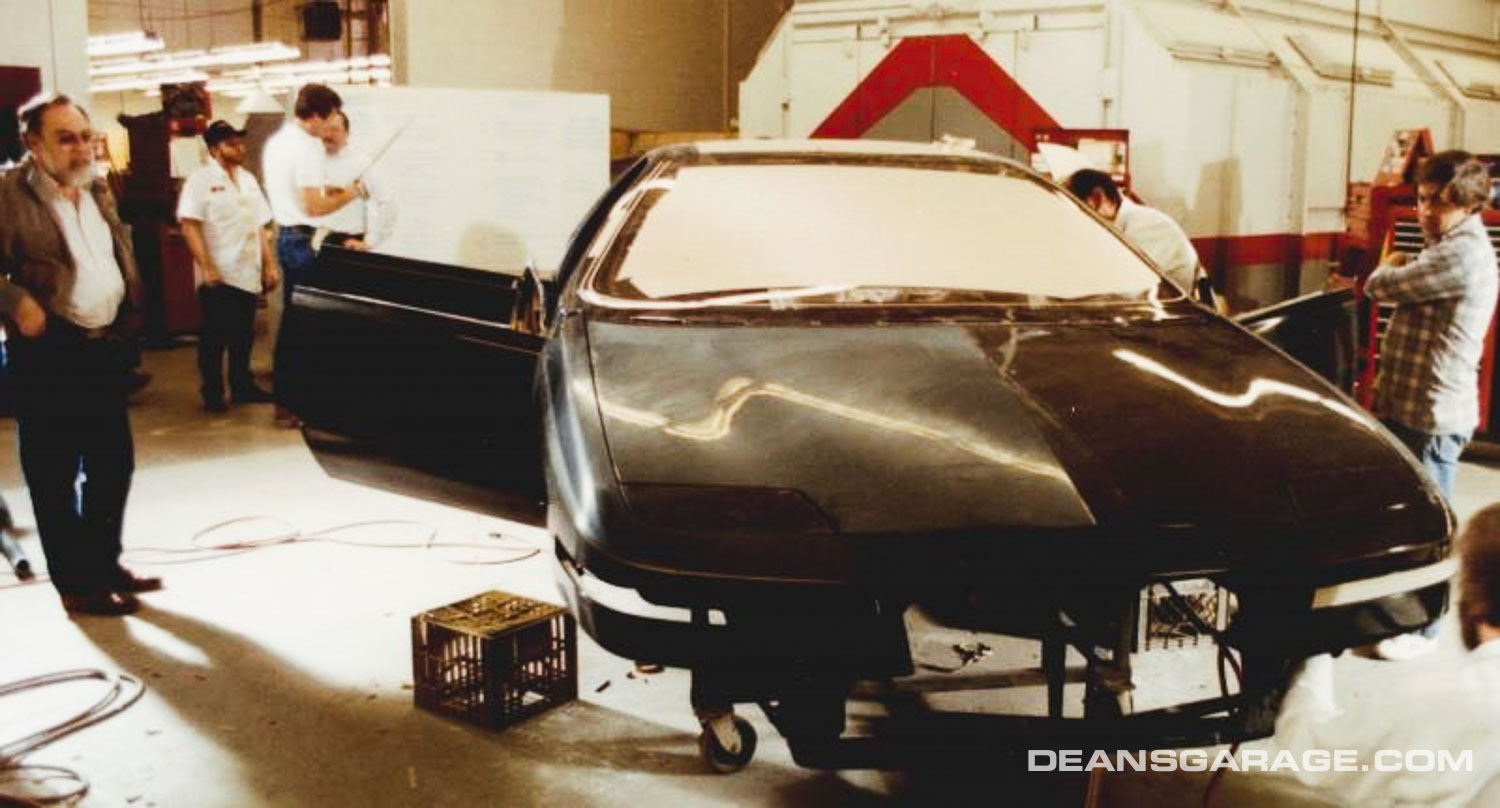
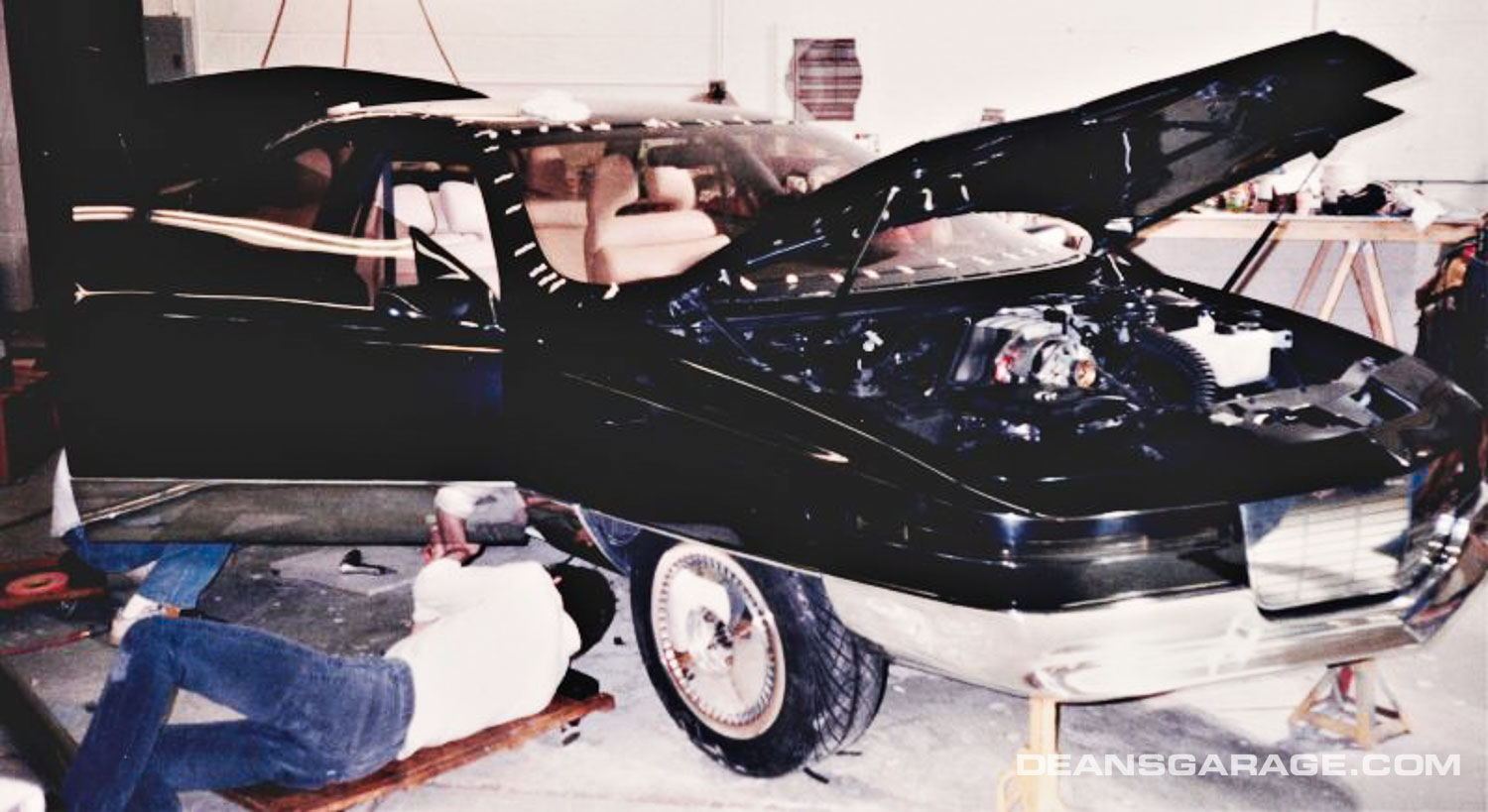
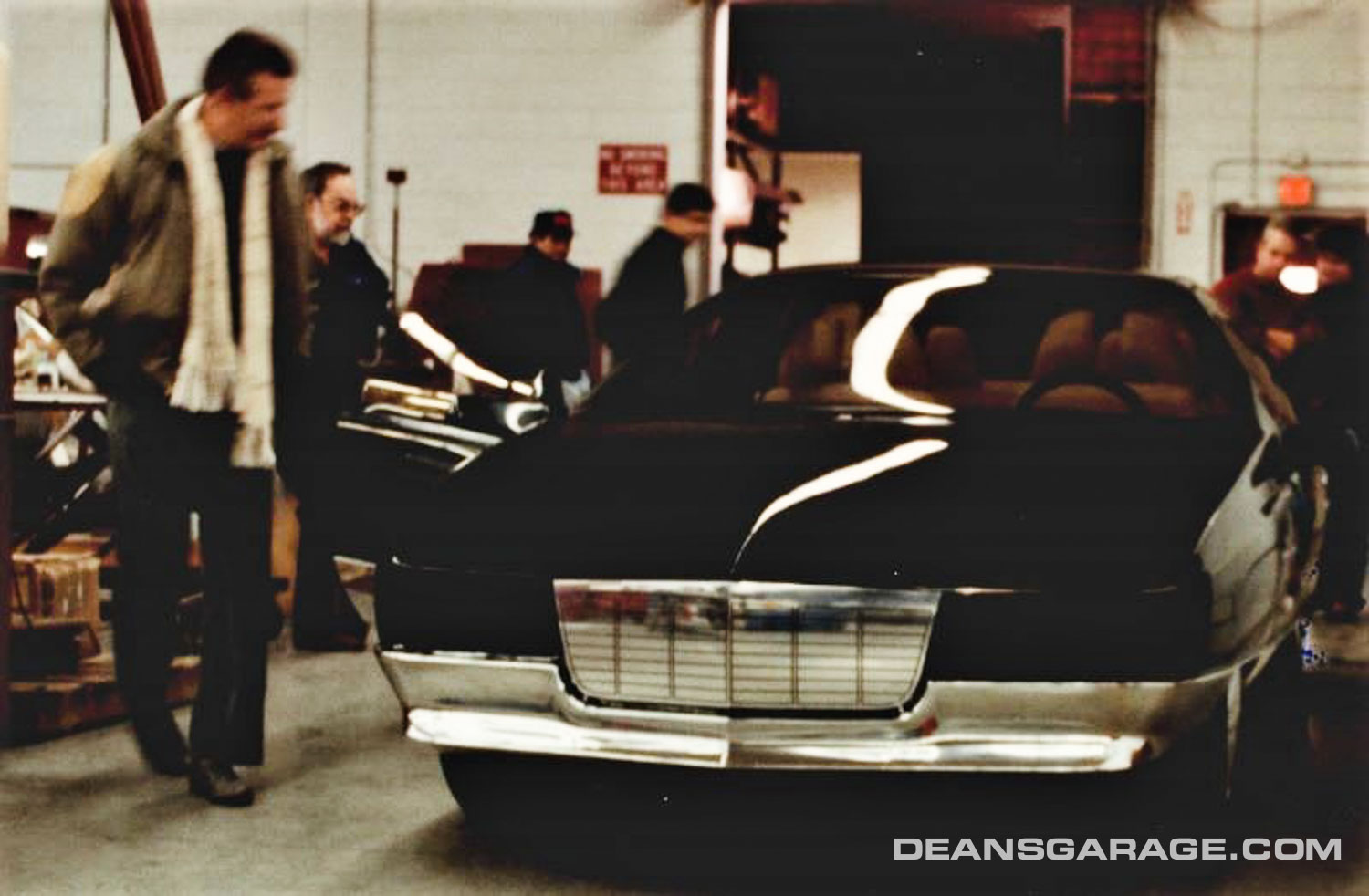
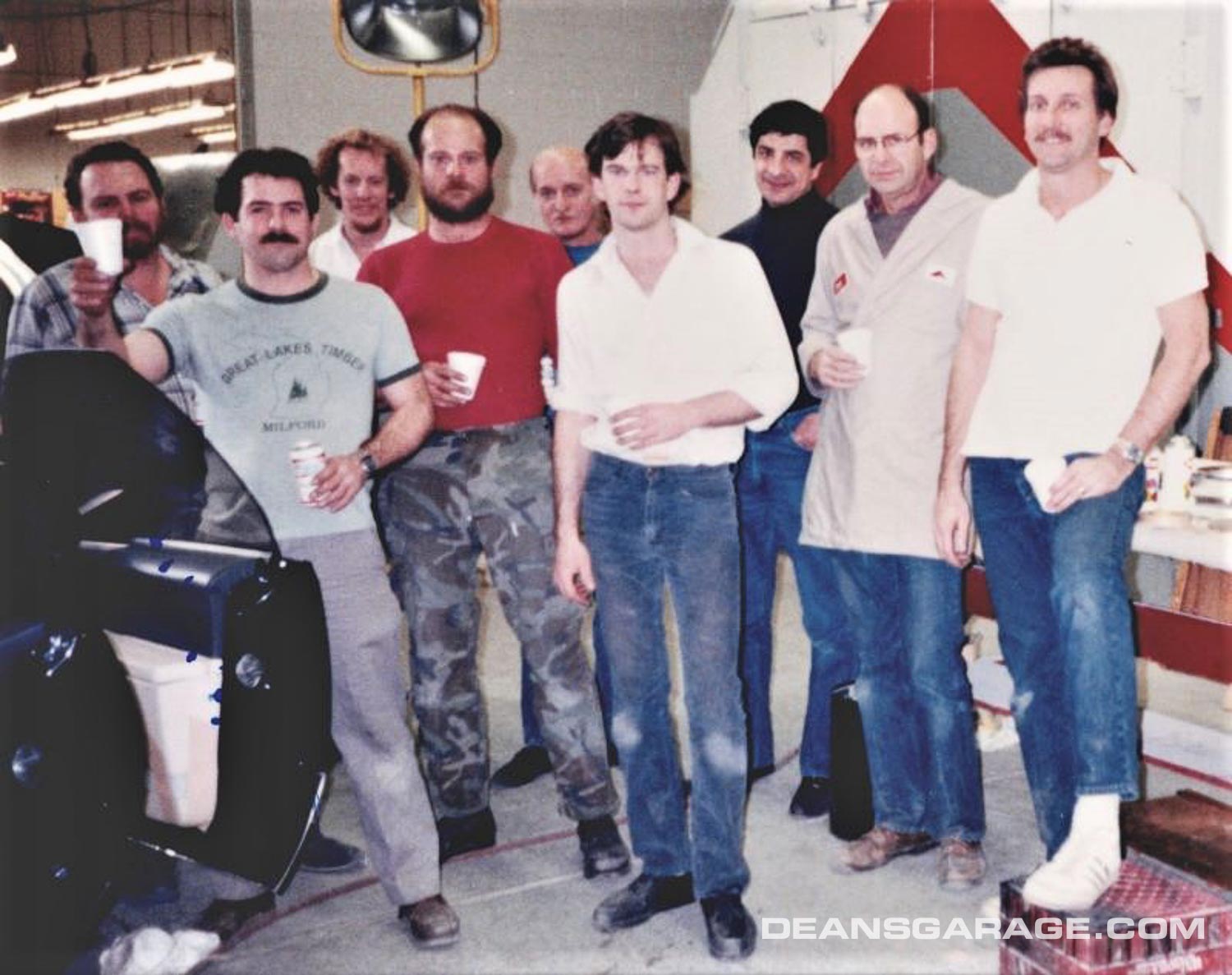

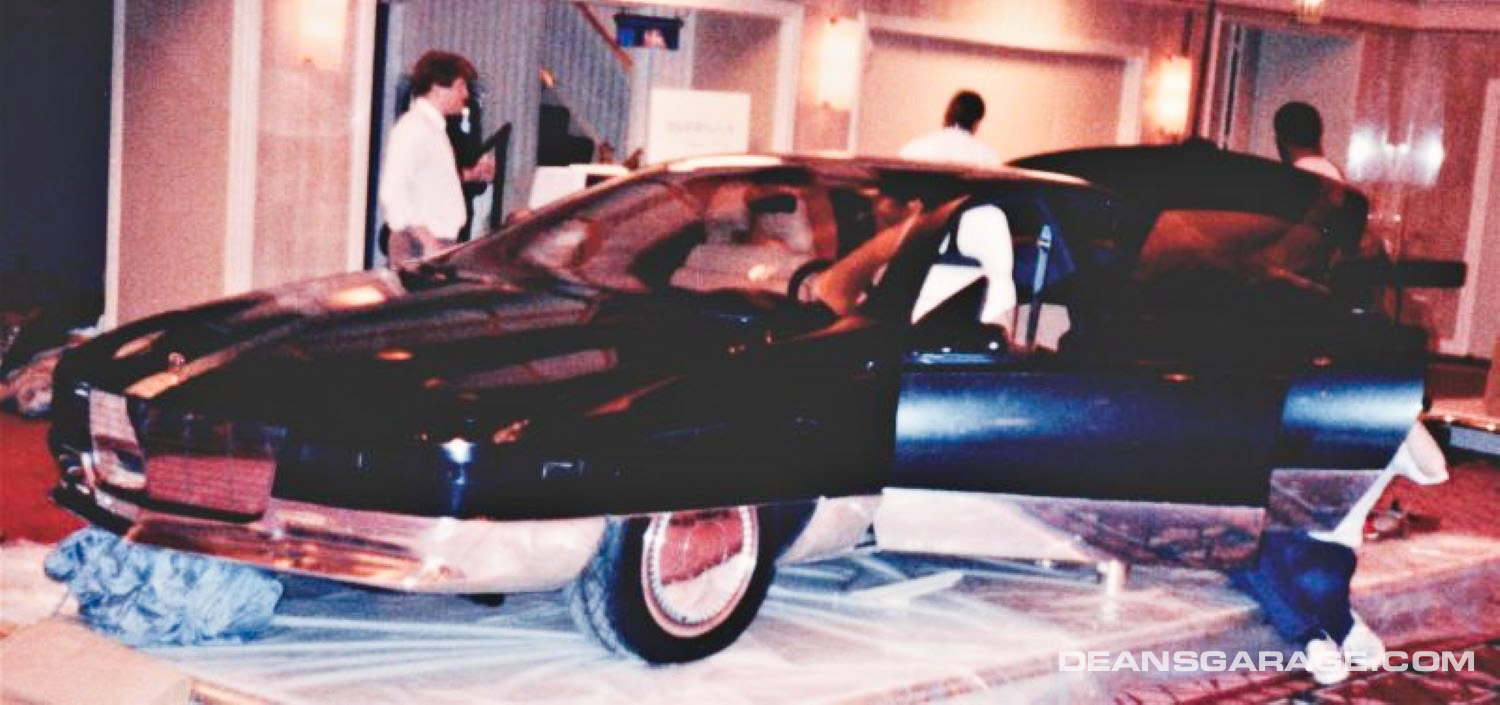
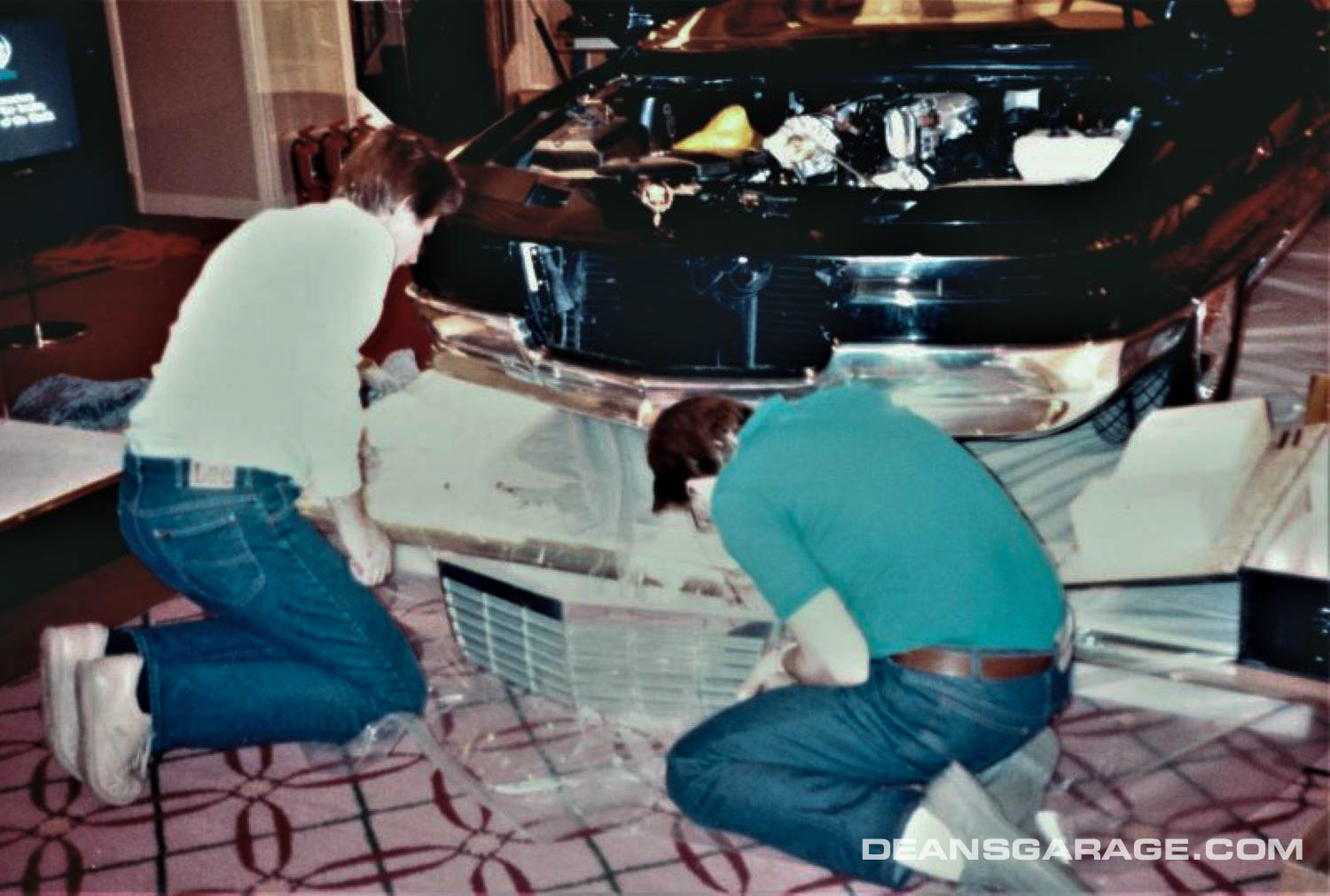
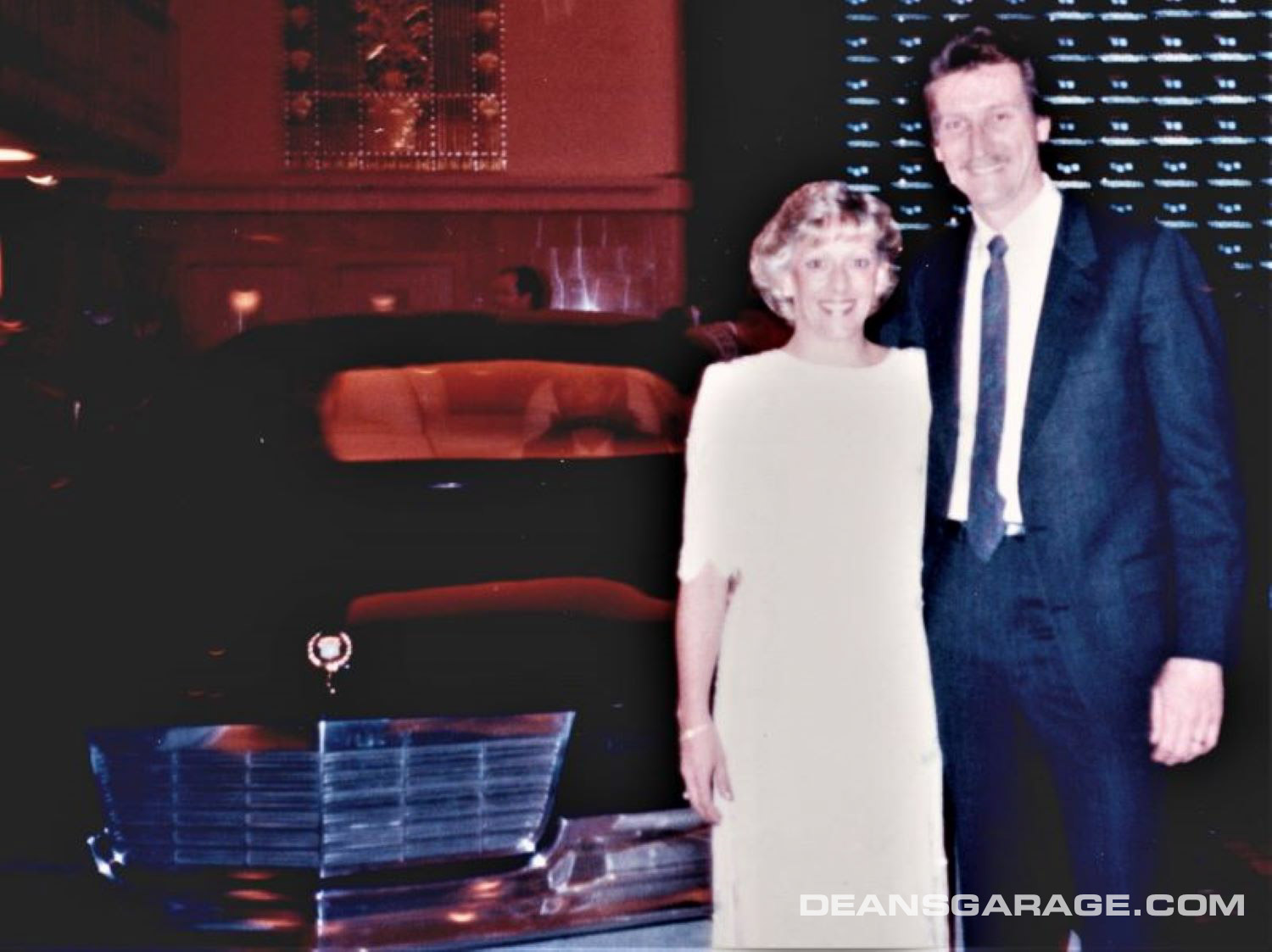
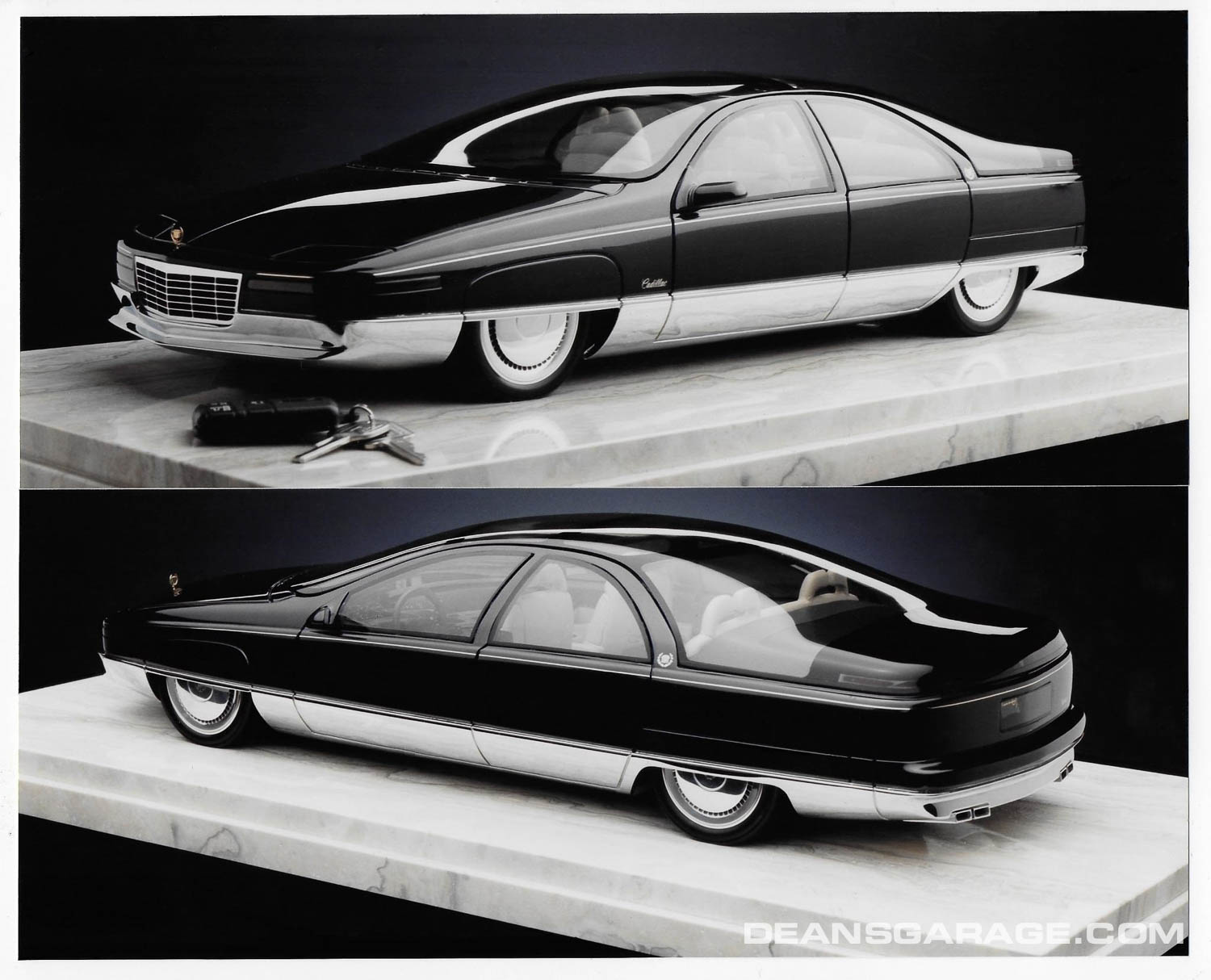
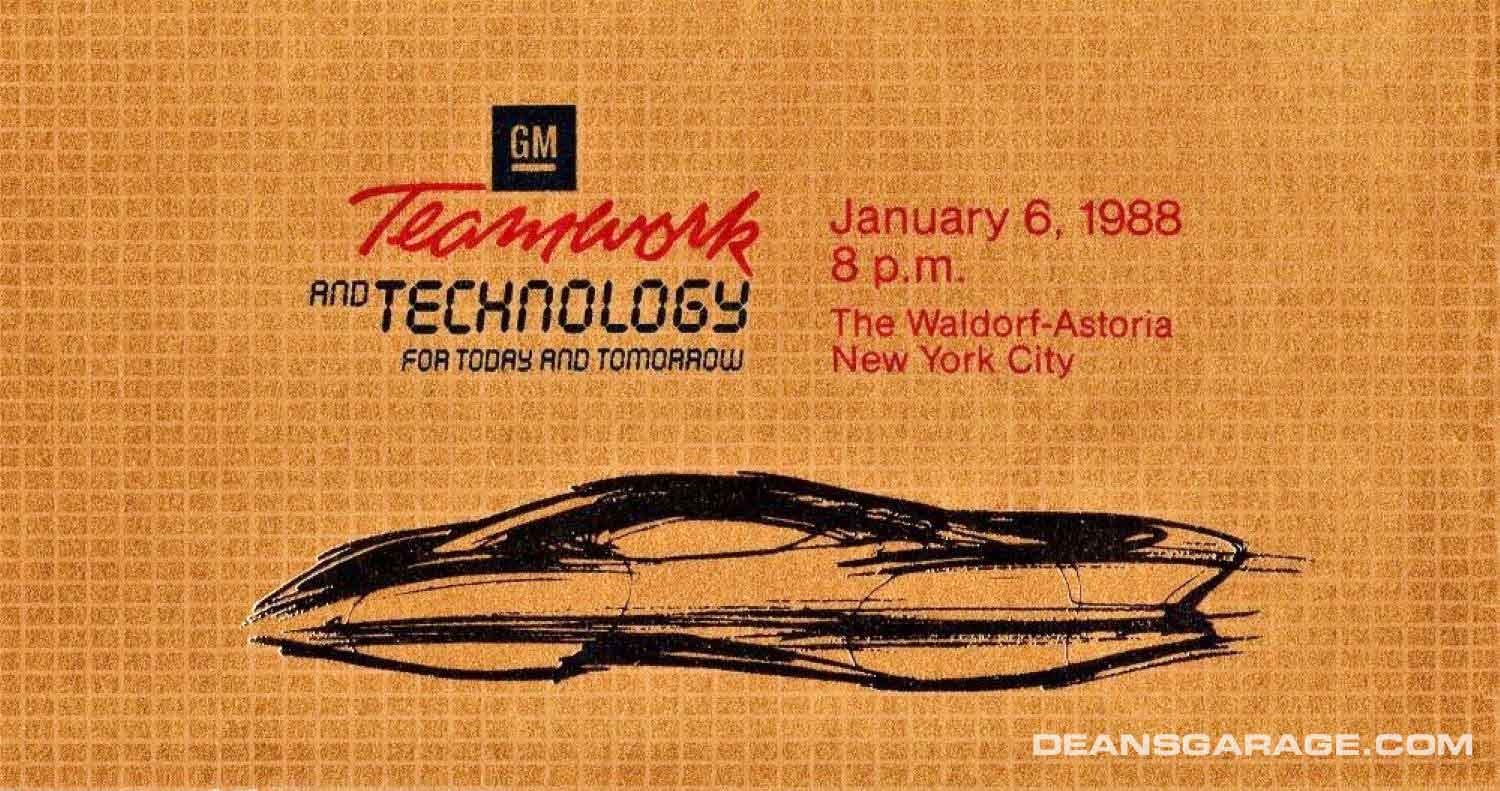
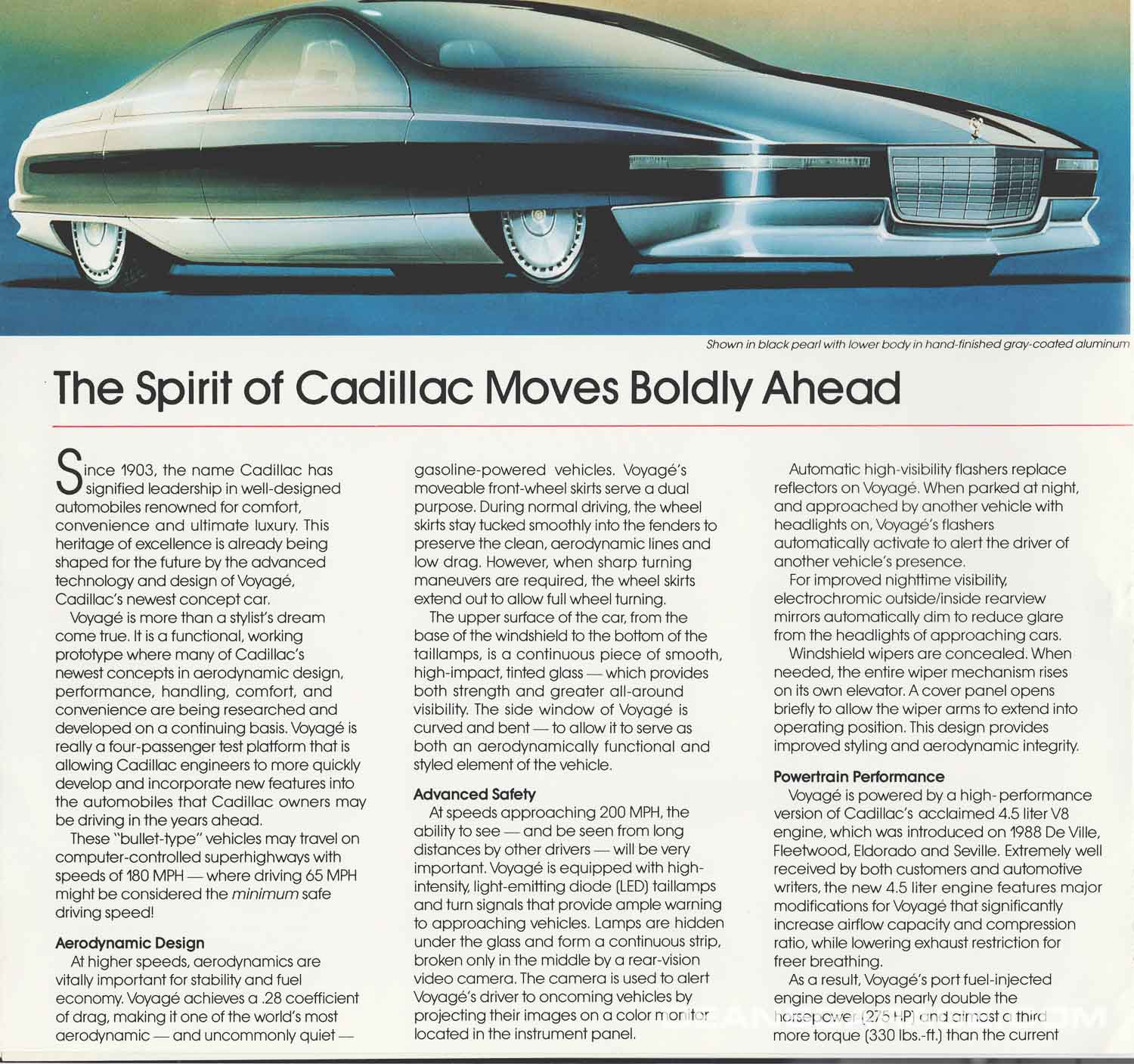
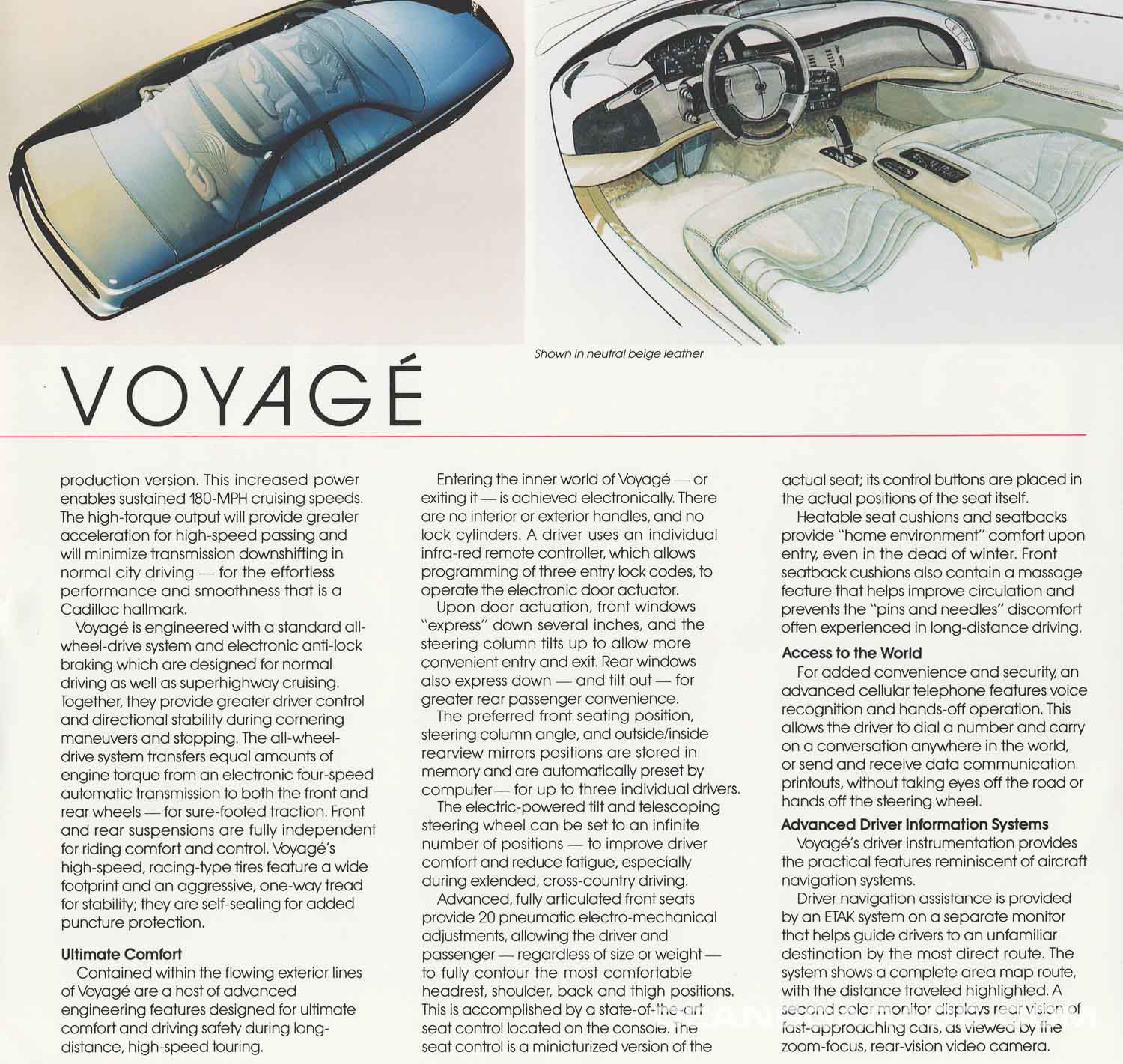
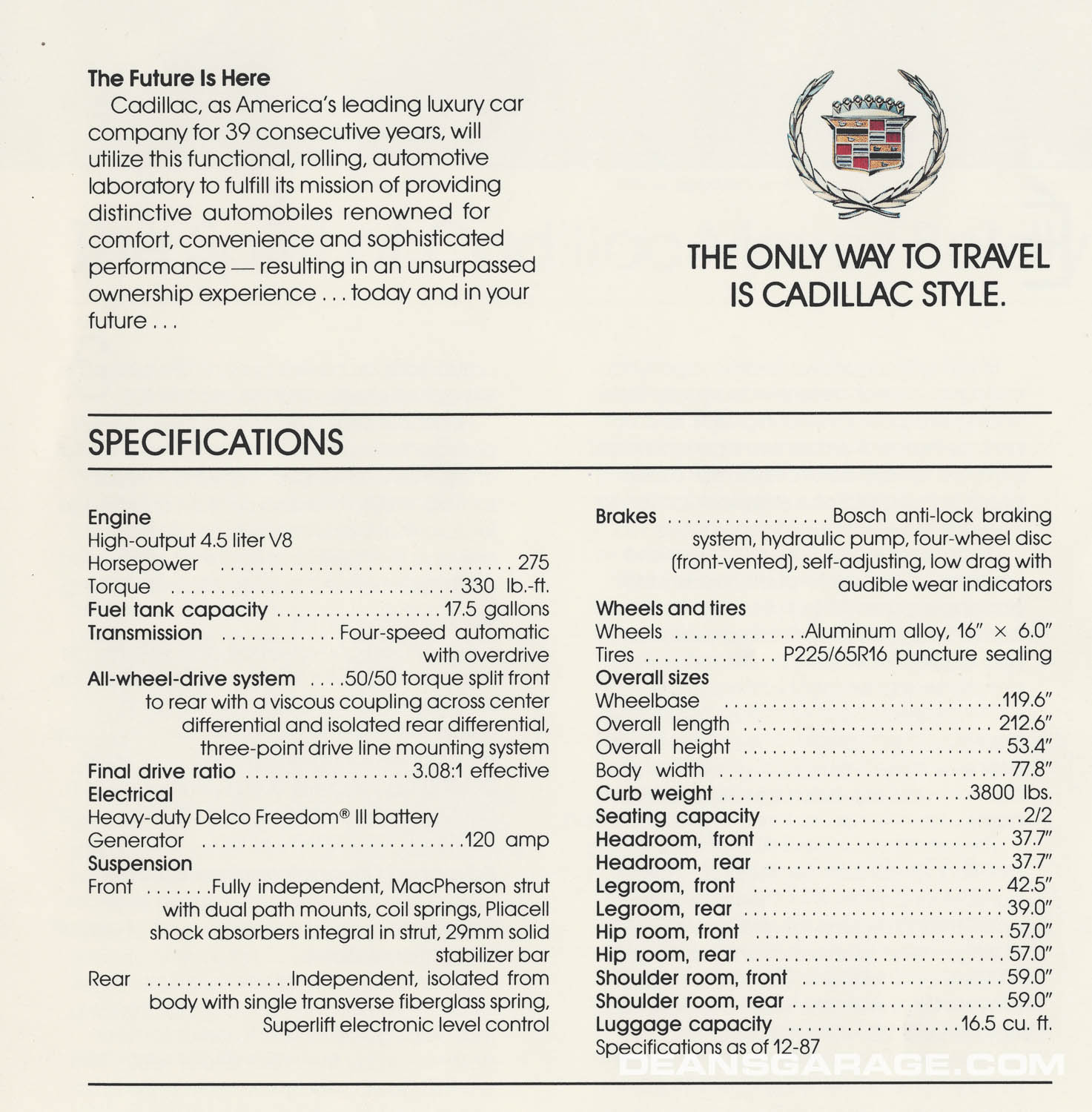
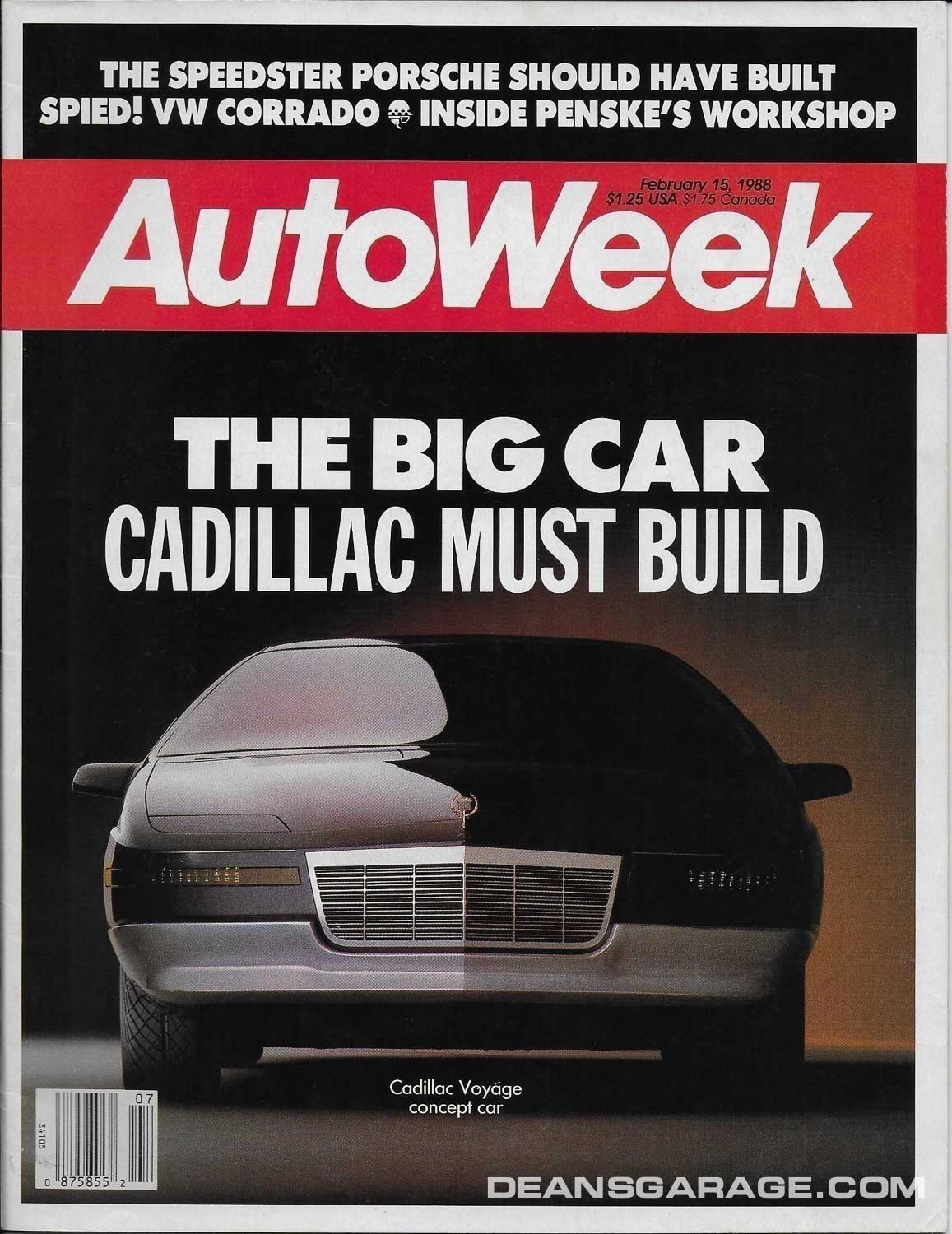

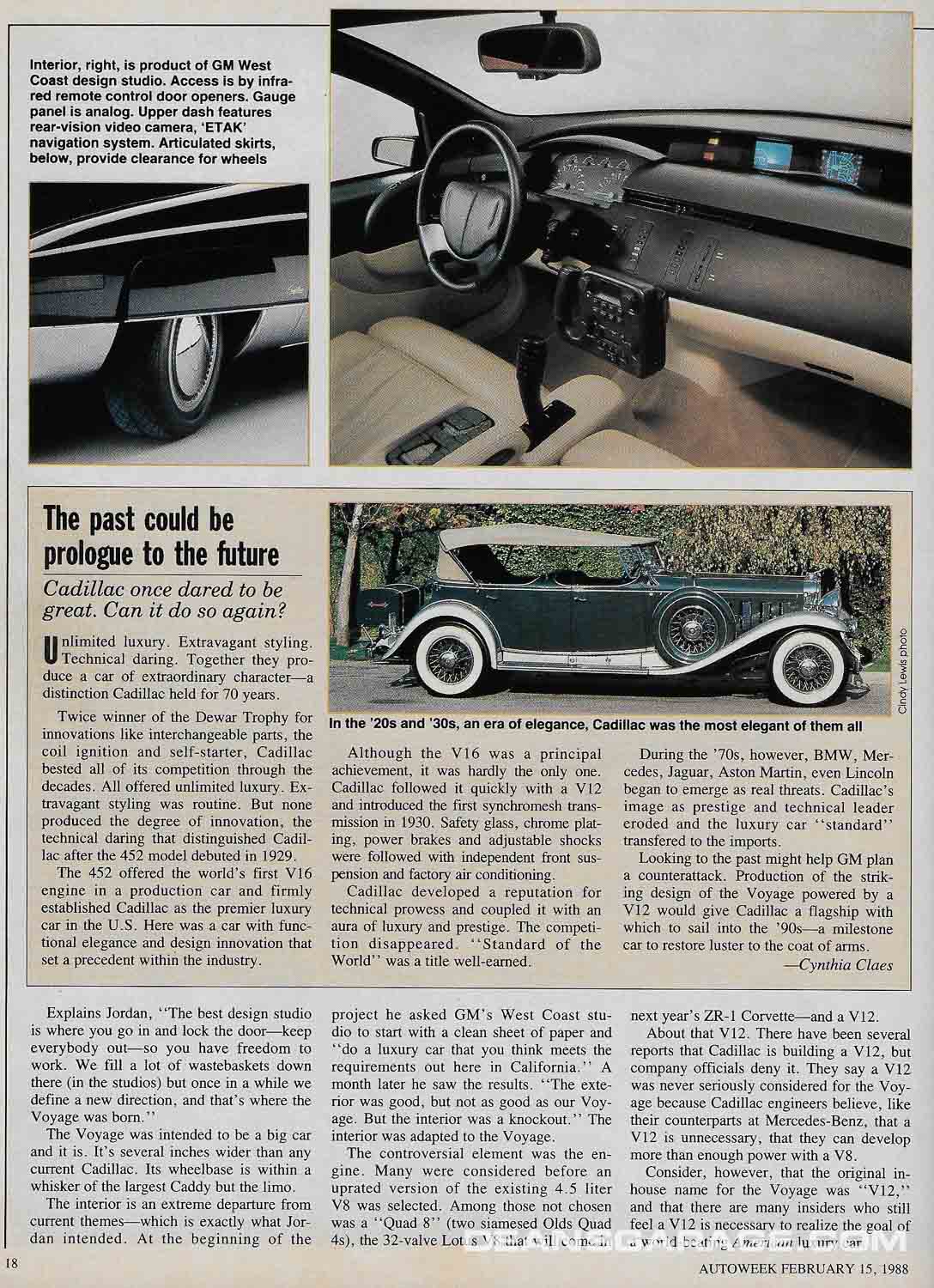
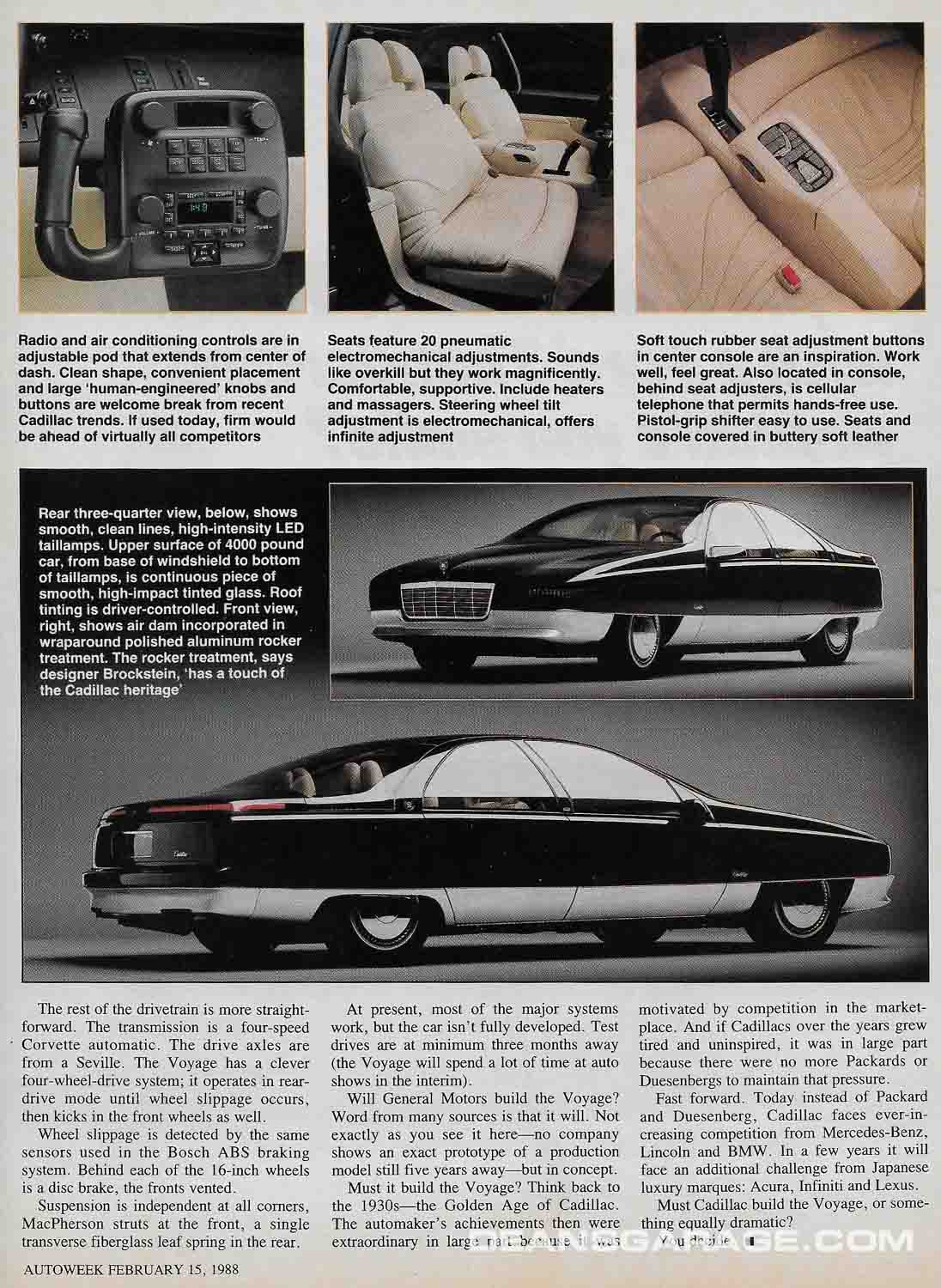
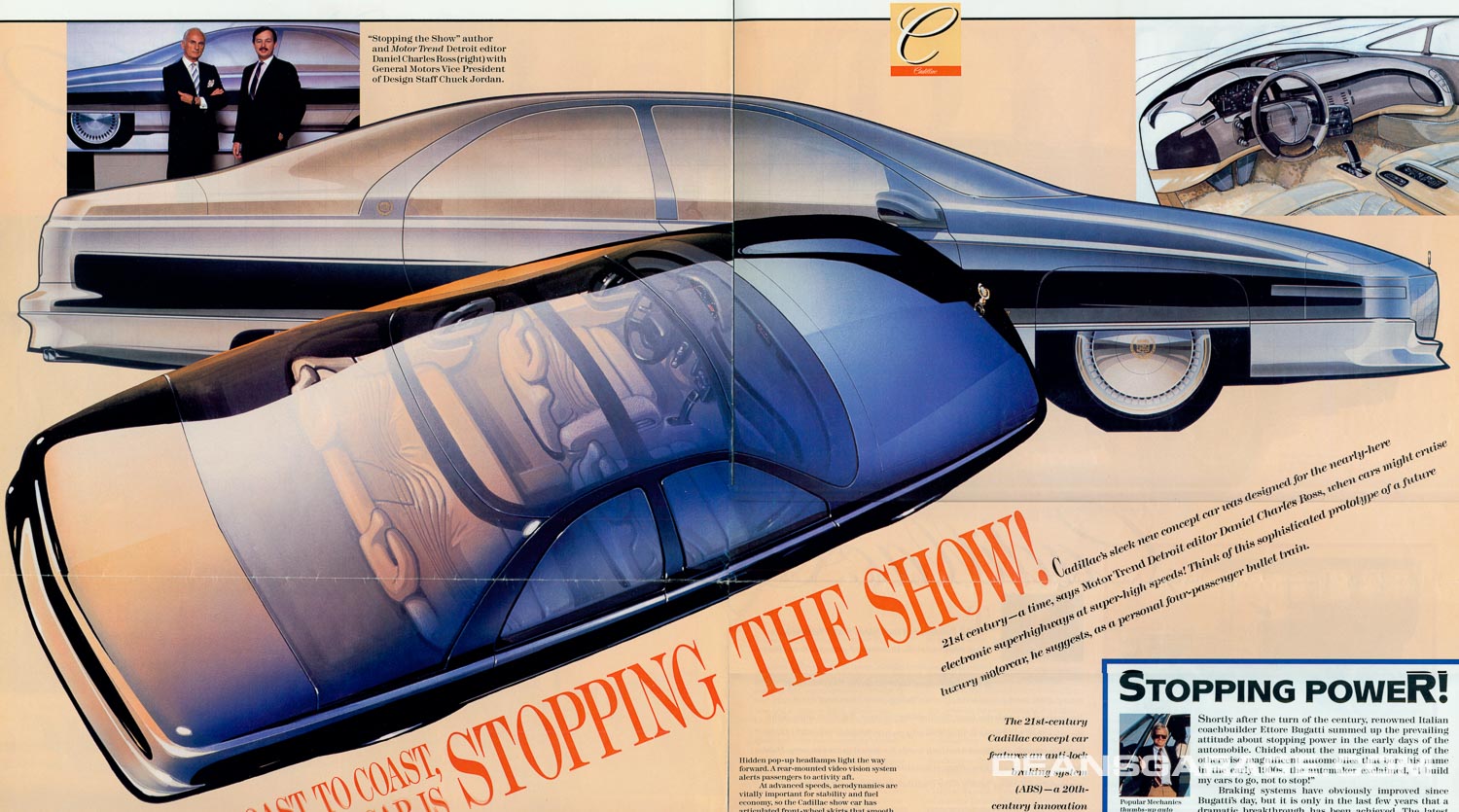

John Manoogian preceded the design shown here with his design in Cadillac studio and it was sent to Chevrolet and became the Impala. Just ask him for a photo. He may have one or his sketch. Brockstein must have seen John’s design and was inspired by it. Ask him!
I’m curious, how much did this design influence the subsequent work to create the 1992 Seville? Additionally, I see a fair amount of 1994 Fleetwood in this concept (which was a shared platform with both the Caprice and Roadmaster. Thank you.
Given the production 1991 Caprice and Roadmaster, as well as the Cadillac Fleetwood, I see that this concept influenced the Chevy and the Buick much more and less so the Cadillac. The ghost of Frederic G. Donner probably was smiling when he saw these cars, as he allegedly hated expensive sheet metal variations between models and brands.
Incredible—I own a 1994 Deville and my son drives a 1997 Deville. Thanks for the story!
Don De Lotto Jr
I for one need to know more about Triad. If I recall correctly it was established by three renegades from Chevy R&D — hence the name…but I’m probably wrong.
I was on my way to NYC by train to take delivery of a new vehicle for one of my lease accounts from Potamkin Cadillac and while reading the New York Times aboard the train, I read about the Teamwork And Technology event that day at the Waldorf Astoria. The article described it as an invitation only event primarily for selected GM dealers.
My appointment to take delivery of the Cadillac at the dealership was not until late afternoon and I had planned to spend the day bopping around NYC. When I read the article about the Teamwork and Technology event I thought to myself that I would love to attend to see future GM car design and since my lease company had a GM Fleet Account number, I would use that reasoning as my attempt to gain entry to the event.
It was a cold January morning and I was dressed in warm casual clothes and a heavy winter parka to be comfortable on the streets of NYC that day. When I arrived in front of the Waldorf Astoria to attempt to be admitted to the event (really a personal dare as much as my interest in seeing GM future design direction) I saw GM dealers getting out of limousines dressed to the tees. I deduced by looking at those entering the hotel that this had to be a very exclusive invitation and not extended to every GM dealer principal.
When I approached the hotel point of entry I was stopped and was told this was an invitation only event. I said that I was a GM Fleet account and would love to attend. They asked me to wait and then someone from GM Fleet appeared and invited me in to the event. My personal dare worked out! I felt a little bit self conscious being under-dressed for this event but proceeded inside anyway.
There were many future looking cars on display and a cad cam car design computer connected to a milling machine carving out a clay automobile model. I was standing about 15 feet away when Roger Smith suddenly appeared and began addressing the group. As those invited went on to a sit down lunch I left feeling very satisfied to have seen GM’s future but also succeeding in my challenge to myself to get into this event.
Now I can more fully appreciate how GM has been in the styling doldrums rut for the last 40+ years. This has all the excitement and appeal of a plate of turkey pancakes. At least it shouldn’t have had any trouble passing the wind tunnel test.
My Dad became a Cadillac man after being a Corvette guy for years. When we heard about—and the saw—the Cadillac dream car, Dad said, “They’re right. Cadillac has to build this car, and the V12.” Though they later used obvious styling cues from the “dream cars”, GM decided to take baby steps instead. I guess that worked in some ways. They got Dad to buy an Allante, and later an XLR. Dad groused about both, because of the engines. He was a year early for the Northstar Allante and couldn’t get an XLR-V. To this day I wish they’d taken the big step and made the “real” car and done at least something to regain the status of The Standard of the World.
Congratulations Bruce, a fantastic article. Wonderful. I will answer some of the questions that I can.
The Caprice was already released for production when the Voyage was done. No model from anywhere else influenced the Caprice concept, It was completely done by Ben Salvador, taken from a large side view sketch Ben had done shortly after starting in Chevrolet Two. The day we got the seating package we put it on a vertical board below Ben’s sketch and Dave Holls came in, looked up at the sketch and said, “Do that one” .
The Caprice was the first car to be done for production that was not downsized so it caused quite a stir when we first showed it with a lot of other clay models, a big review. It was on a fourteen year old platform, we even had to use the old hinges on the wagon. We wanted the wider tread from the wagon on the sedan but Chevrolet could not afford it.
I was then sent to Cadillac Studio and when we got the assignment for the new Fleetwood Dennis Burke’s studio supplied us with a fiberglass model based on Caprice platform that was obviously influenced by the Voyage. Scott Wassell, Paula and Greg took over the project, created a release model for production. The rest of us in Cadillac Studio were very busy with follow-up work on the Eldorado, Seville and Deville. Busy times.
TRIAD was a fantastically talented shop. In Chevrolet we did the Eurosport show car there and then later the Monte Carlo introduction model as Daryl Ernhart’s Winston Cup Street Car. Mike Pocabello was the only one left of the three original R&D engineers who founded the company.
Again Bruce, your first, very well written, informative and very accurate by my memory. I know you worked hard to get the facts right.
Bruce Brooks
In the large group photo in front of the Triad building there are two men in dark suits standing in front of the Voyage driver side rear fender. The one with his arms folded is Chuck Mountain and to his left is Mike Pocabello who were two of the three original owners of Triad. In that same photo, beyond the Solitaire hood, is Bill Rohlfing. He is the tallest man with a necktie on. In the small group photo above it Mike Pocobello is the third from the right with the black turtleneck.
I wonder what the thinking was by Jordan, Holls & co. at GM Design at the time. They were very talented designers but what they were turning out back then was often disappointing. I have never understood how the full-size “Orca” RWD cars passed muster given their bloated look and this is another bad expression of that. The shrouded wheel openings were a particularly poor look that I don’t think has ever worked well on any vehicle, but Jordan seemed to like them in that era. The ACC California model looks better in that respect although the remainder is a bit of a mess. I’m of two minds about the front end on the show car. The grill that it ended up with looks out of place and too tall. It would be interesting to take a step back and explore the thinking at higher levels of GM Design at the time and the forces that were at work there that led to these results.
The cars certainly drew large crowds at the auto shows across the country, where my wife was the spokesmodel. Fun times in GM history.
https://youtu.be/lGddk15tPRI?feature=shared
https://youtu.be/aGtzSCf8zcQ?feature=shared
Was the planned V12 developed with help from Lotus for the Solitaire concept to be based on an all-new design or derived from an existing design like the GM 60-degree V6 if not the 75-degree V6 Isuzu V engine (as Lotus were said to have had a hand in a number of GM/Isuzu designs from 4-cylinder to V8 and V12 engines)?
Also would be interesting to find out if the V12 was linked to GM’s attempt to acquire Jaguar before they were sold to Ford, what with the GM-based Jaguar XJ80 aka Jersey Junior concept?
Back in 1996-97 I performed research for my thesis inside GM’s Design Centre, and spent some time in the library. The exquisite scale model of the Voyage mentioned in the article was still there.
The interesting part is why it was still there–if what I was told was true. Supposedly this model was created as a retirement gift for Roger Smith and presented at his retirement party. But Roger was so angry and upset when he left (due to his reputation both inside and outside GM) that he didn’t bother to take the model. So it was placed in the library.
Is it still there?
Michael, the scale model presently resides on a shelf in the Archives and Special Collections at GM Design Staff.
Roger Smith had a lot to be angry about I guess. Most of it was his own fault. The biggest mistake was to announce the creation of Saturn in front of 300 press in the design patiowithout anyone else at GM knowing about it. He was proud of that and said that if he hadn’t done it that way, it never would’ve happened. I guess we can see now that would have been a better course of action.
You’ve delivered a great article, memories, and gracious for John Shettler to mention my name in the initial concept’s interior creation at ACC. What an opportunity given to me. The impetus for a young impetuous new hire’s seating drew and drawn from Ligne Roset, engineered by another great mentor Charlie Buehner, tooled by the master Billy G.
John Schinella, ACC’s director at that time, provided a vision with competition – bringing in a new BMW 7er to me to study, quite a car to show up to the laundromat in.
With my own laundry I believe.
Oscar speech’s cautionary music is building….
I was 16 years old when I first saw the Voyage in the February 15th edition of Autoweek in 1988. I remember thinking that it was a really awesome looking car and I hoped that GM would build it.
Well, I stumbled across a YouTube video that was posted on June 18, 2024 by “Rare Classic Cars & Automotive History” titled “The 1988 Cadillac Voyage Was The Cadillac GM Should’ve Built”. I watched the entire video hoping to confirm a memory that I had from the Autoweek article. I recall that the glass roof could be tinted by the driver of the car. In my mind I was thinking that the article read something like, the glass roof can be tinted electronically by liquid crystal.
When I watched the video last week it mentioned a back-up camera with a liquid crystal display (LCD). So I don’t know if I just ‘blended’ the mention of the LCD for the rear view camera & the fact that the roof tinting was driver controlled, and combined those two things in my mind.
The YouTube video mentioned checking out the website http://www.deansgarage.com for more information about the Voyage. I eagerly read the entire write up on the website and was not able to confirm the details of how the roof was tinted by the driver. The last page taken from Autoweek has a picture of the radio & HVAC controls, and under that picture there is black insert with two profile shots of the car. Part of the script in that black insert reads:
“Rear three-quarter view, below, shows smooth, clean lines, high-intensity LED taillamps. Upper surface of 4000 pound car, from base of windshield to bottom of taillamps, is continuous piece of smooth, high-impact tinted glass. Roof tinting is driver-controlled.”
So, here is my question. How is the roof glass tinting controlled by the driver? Is it LCD, or something else?